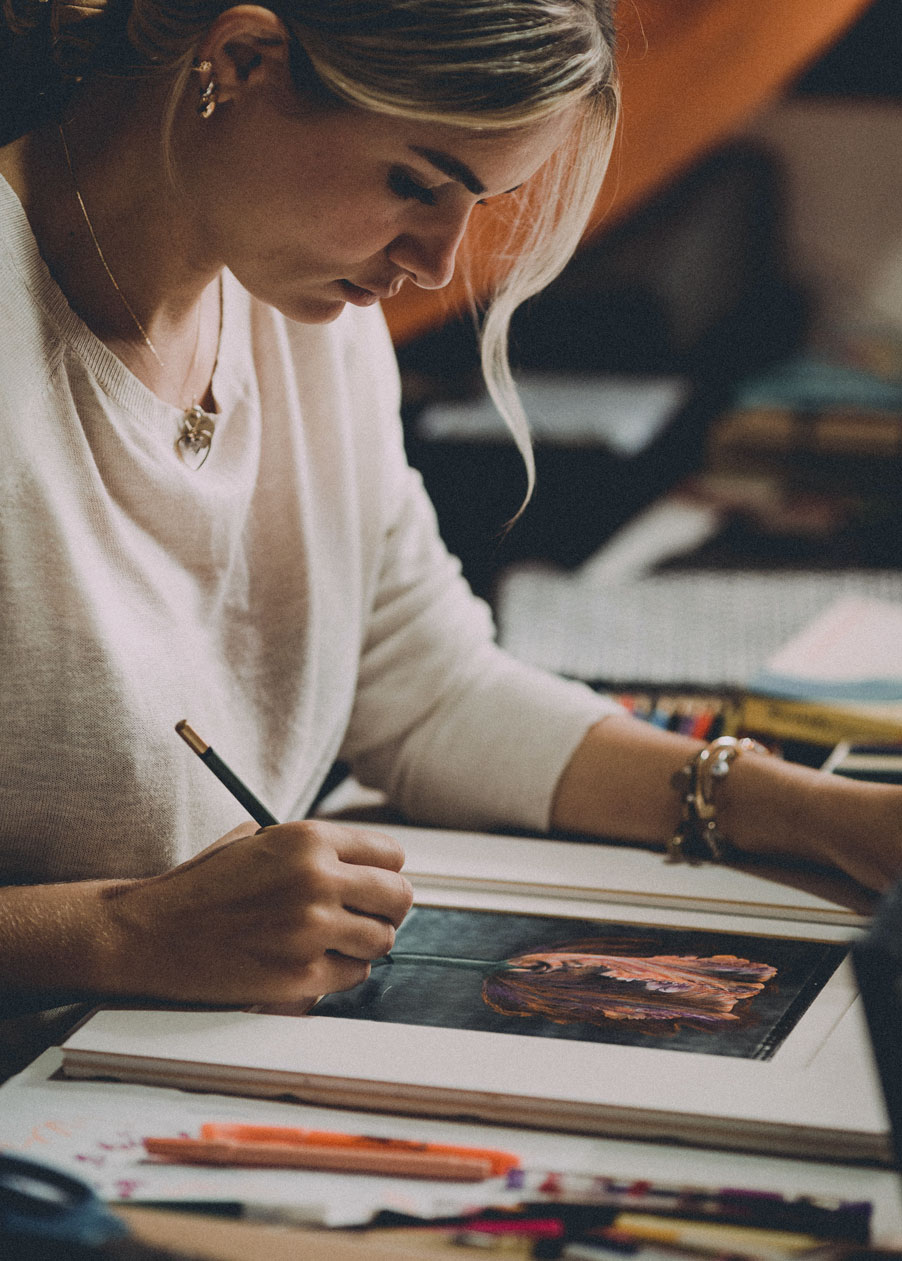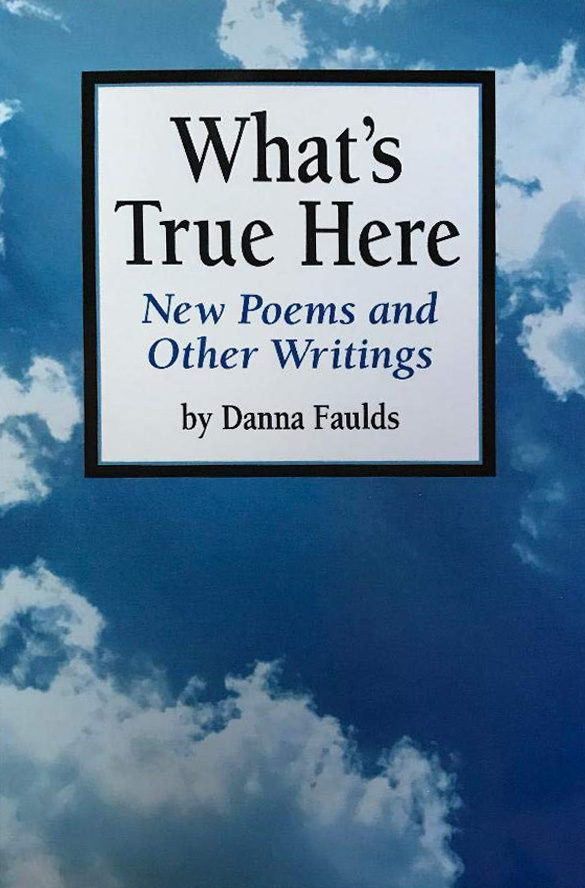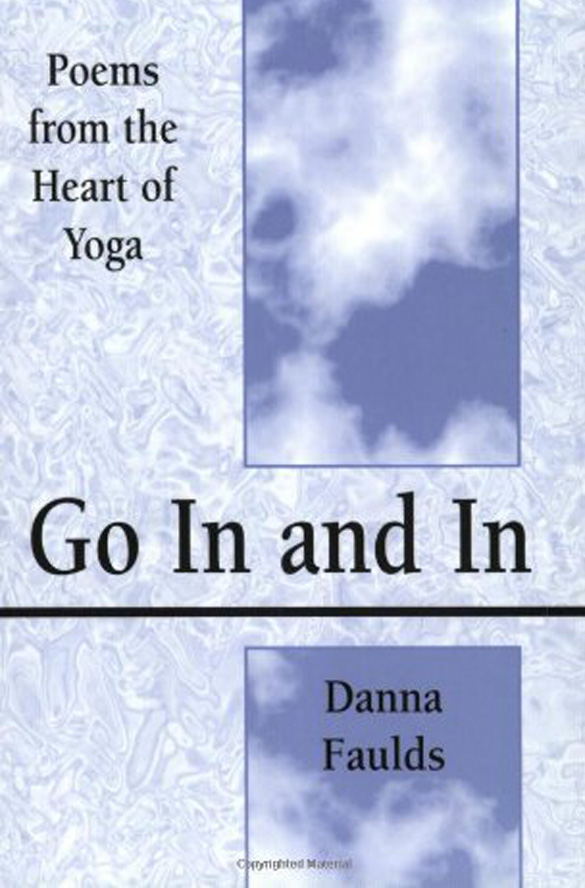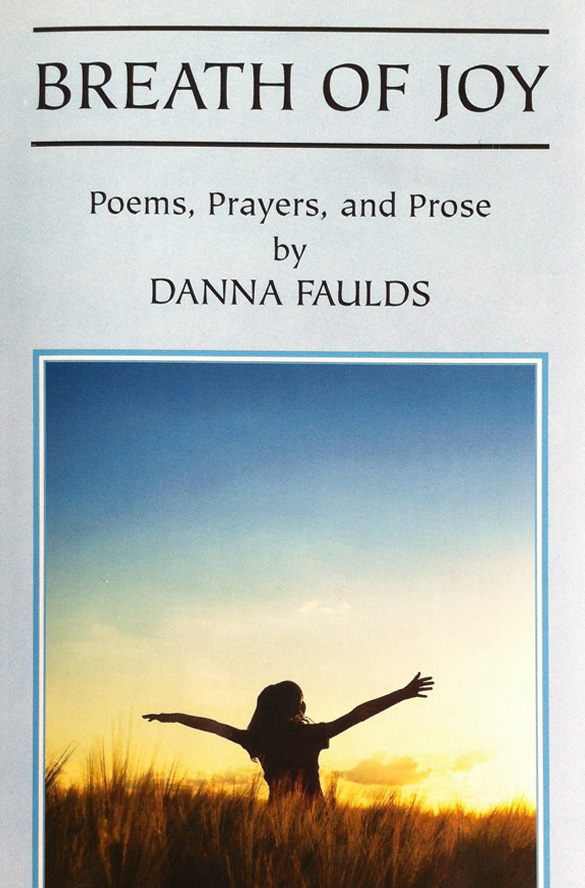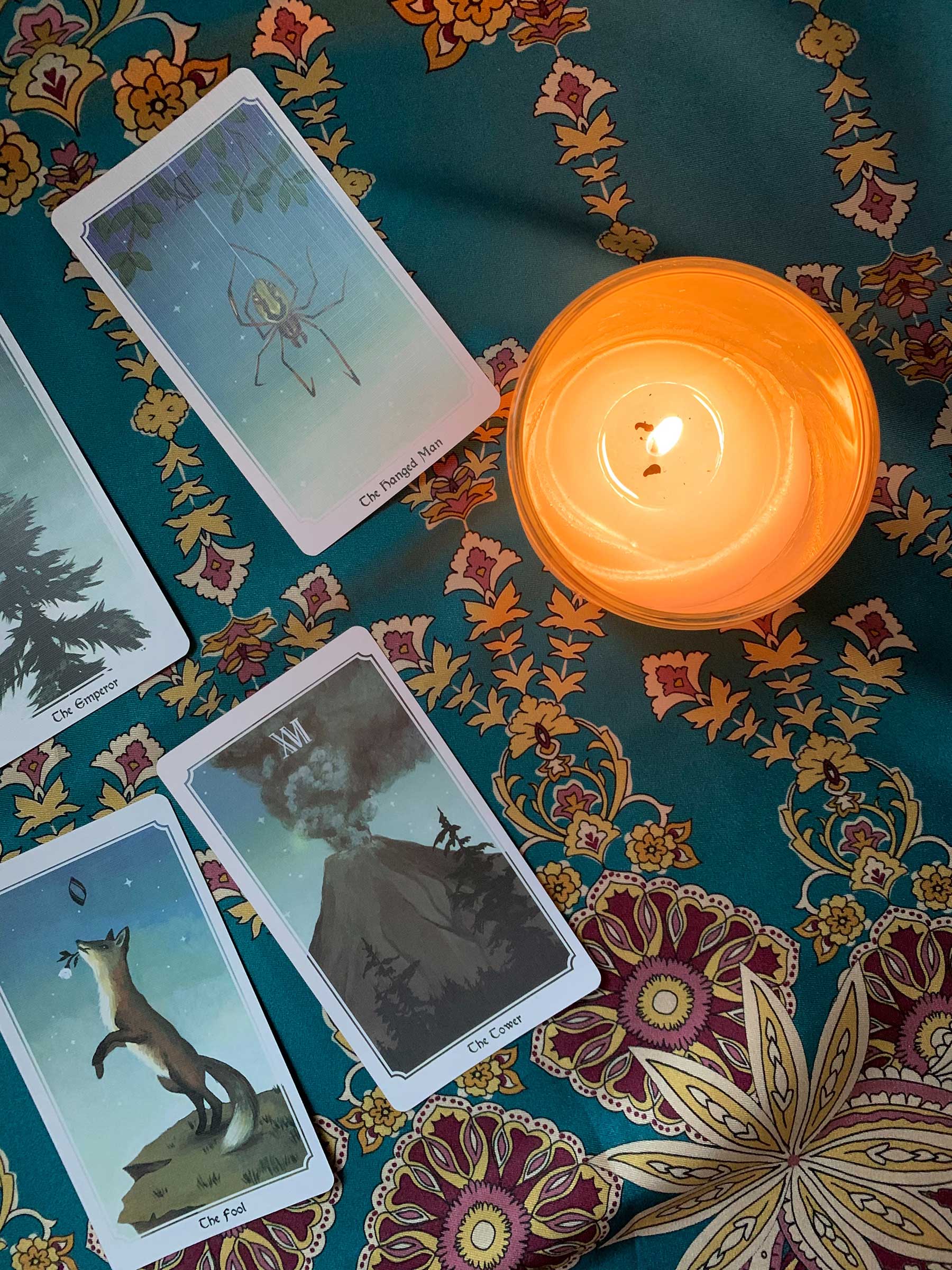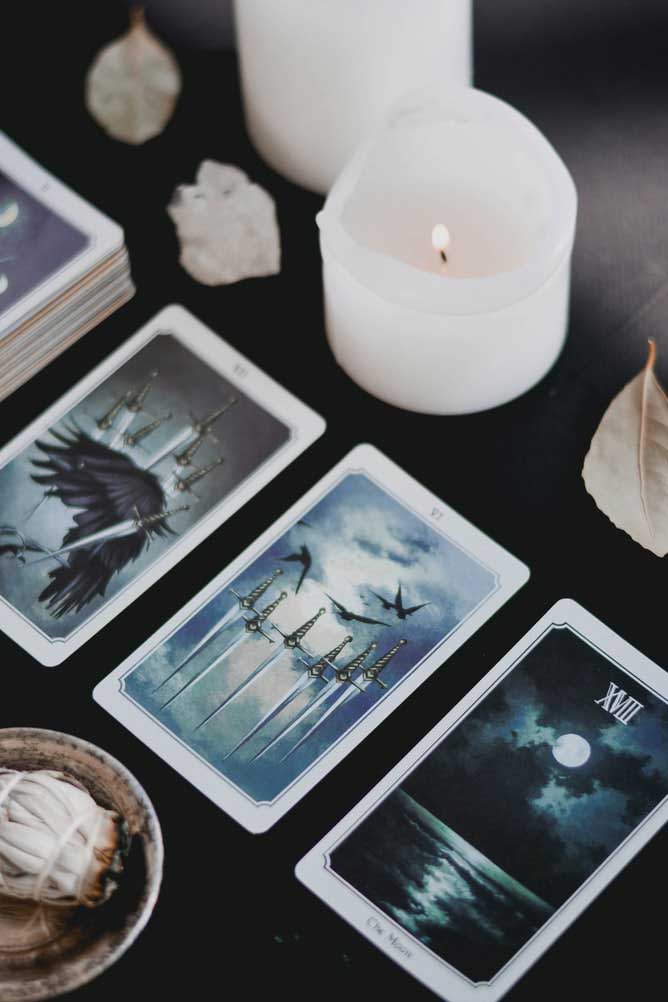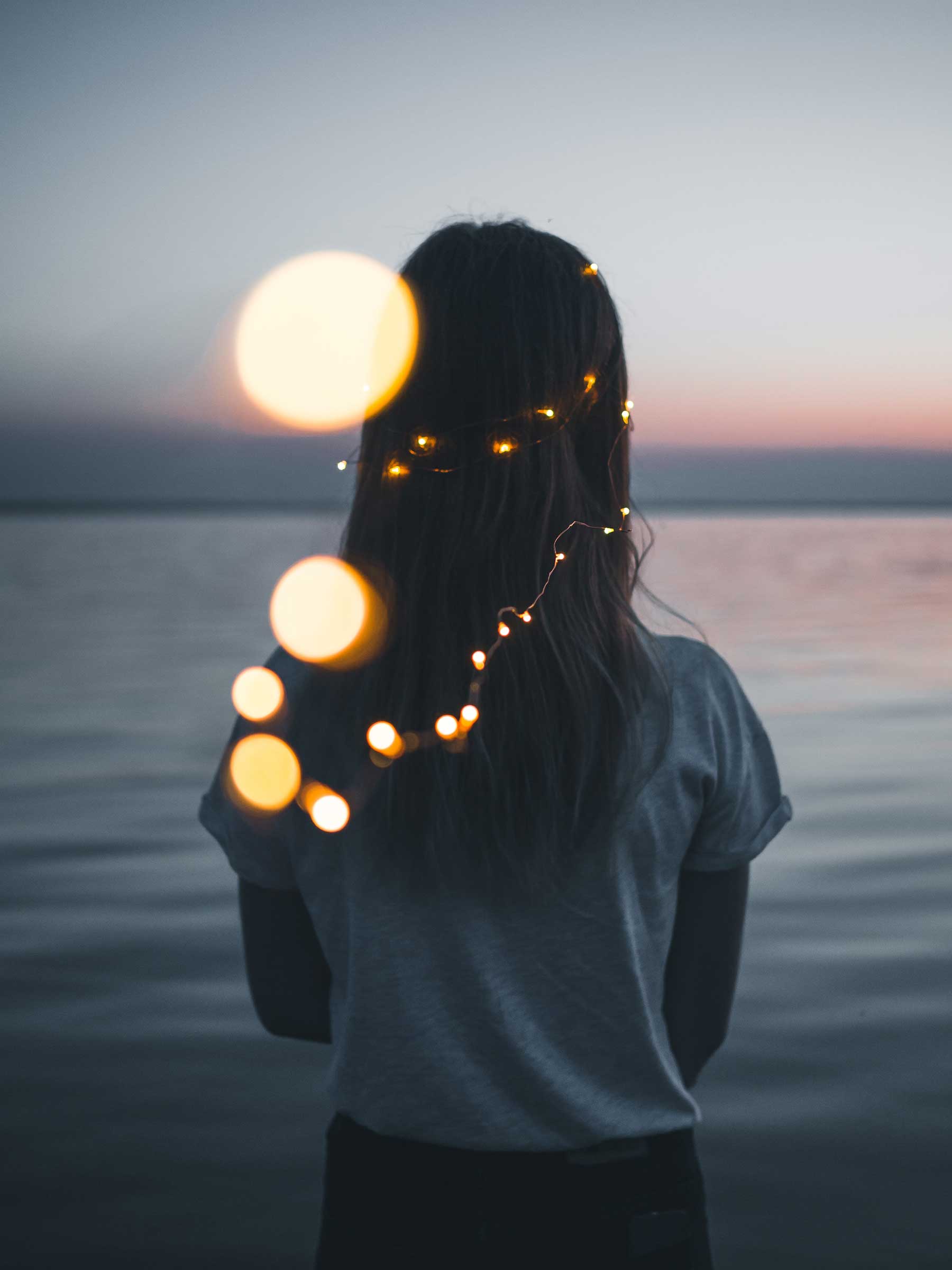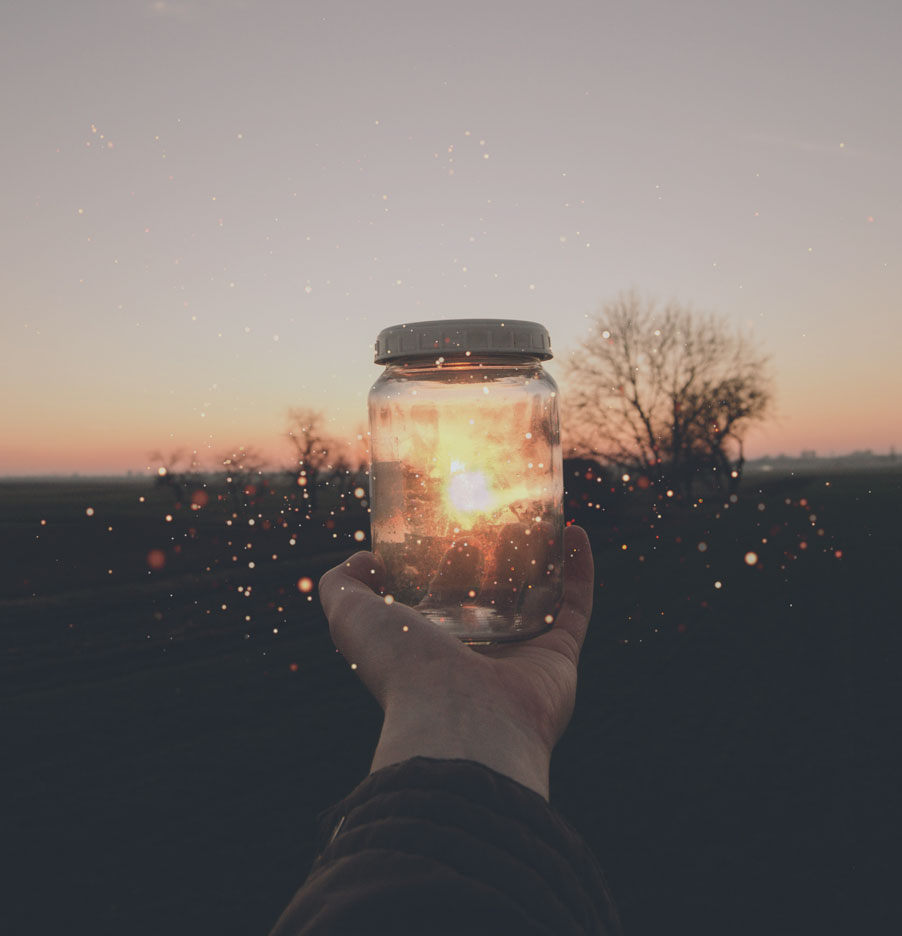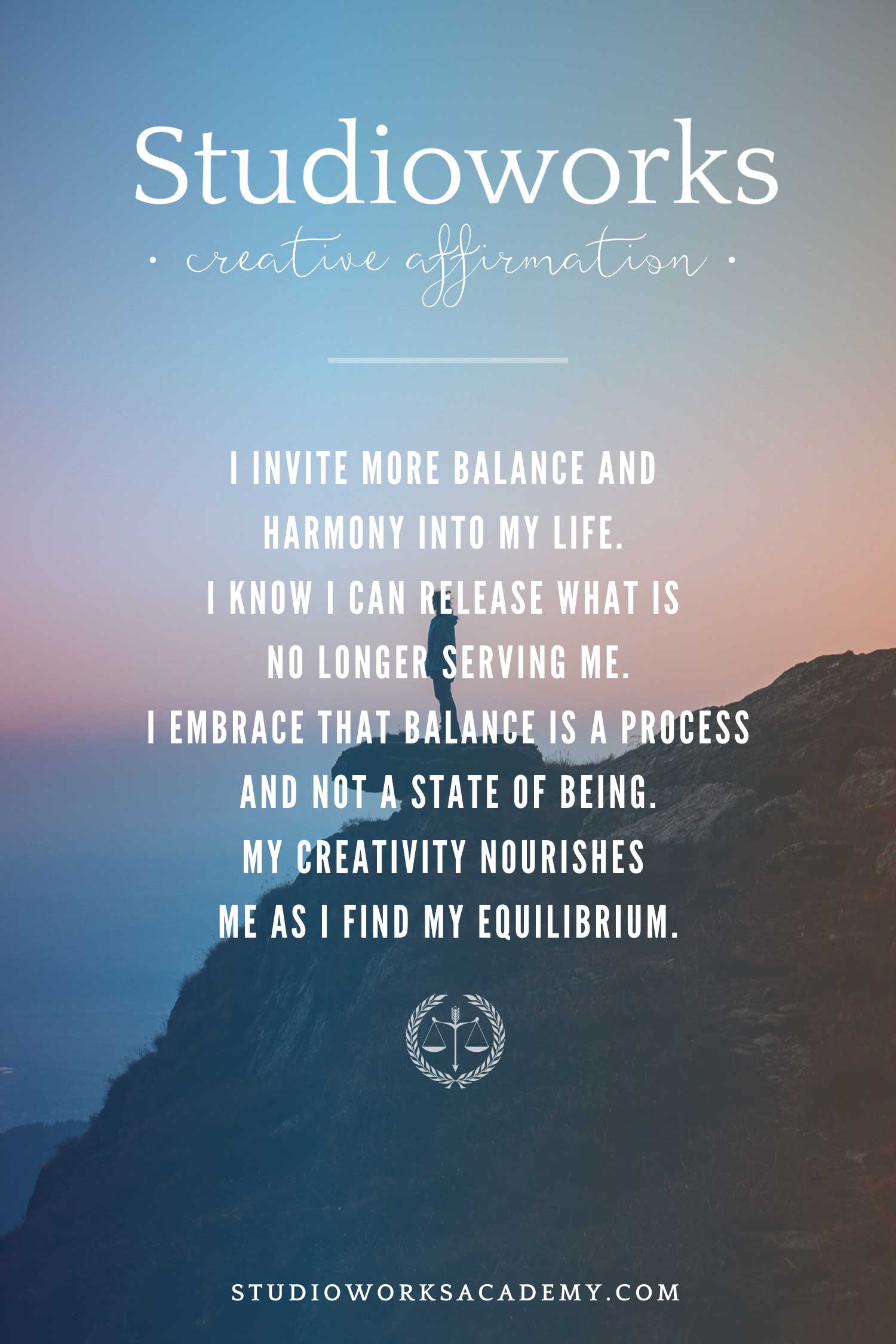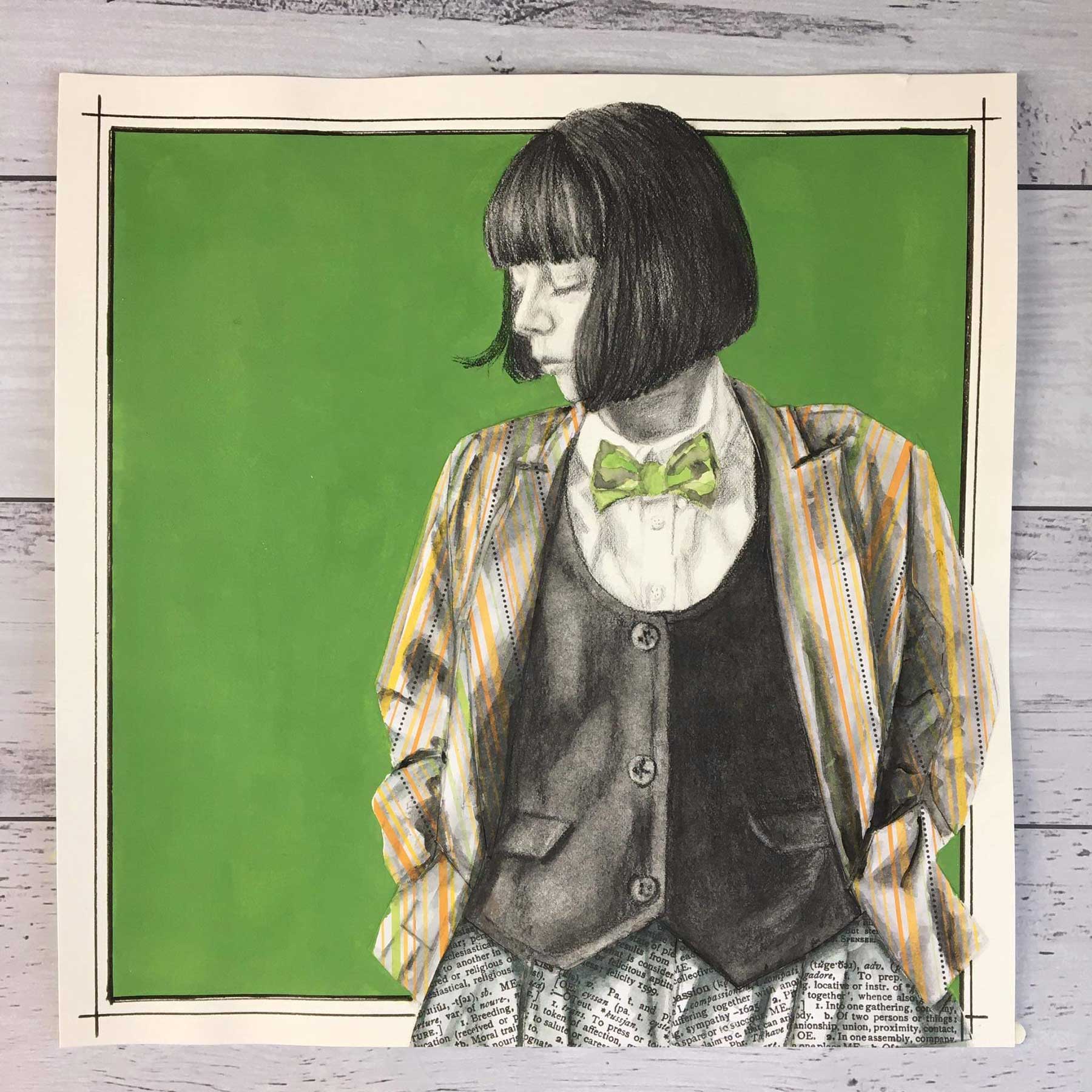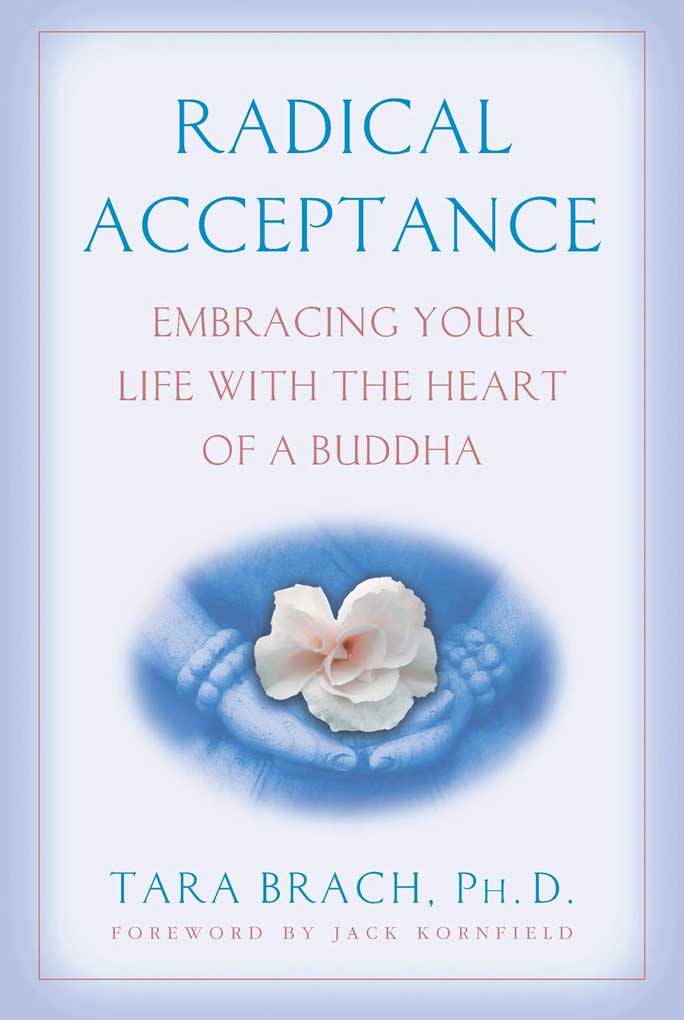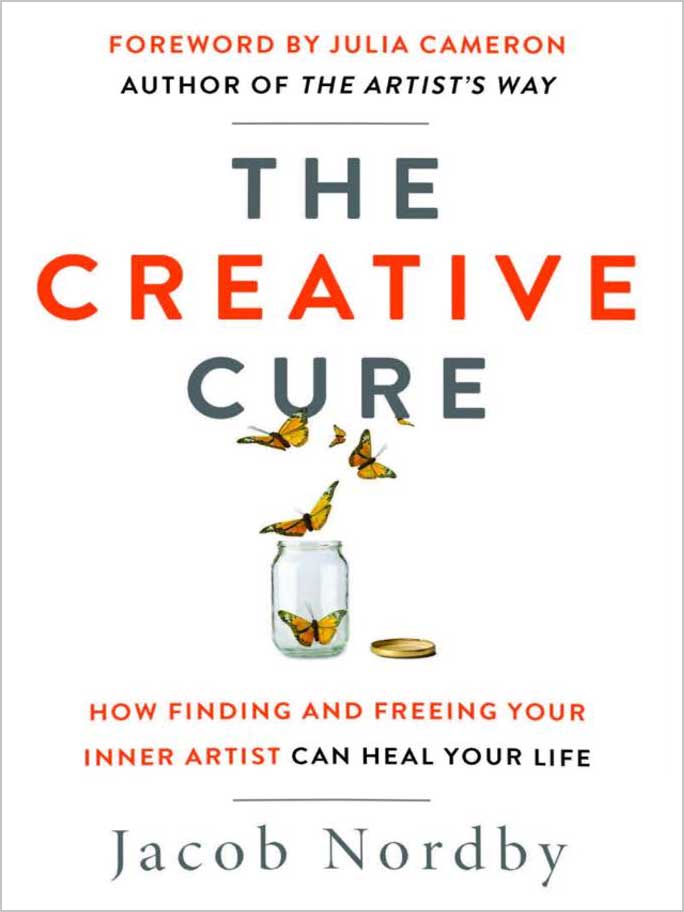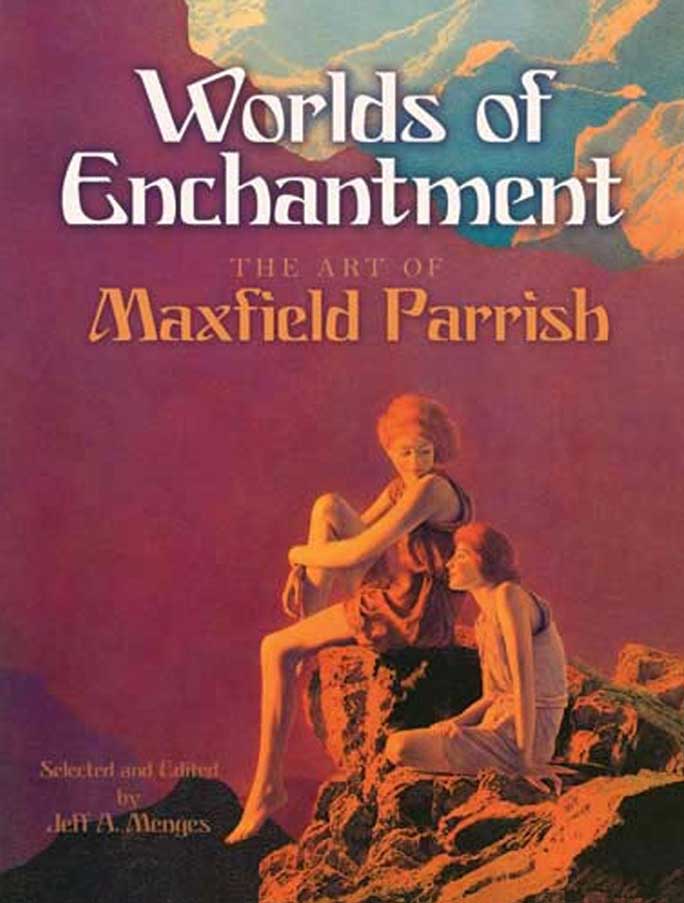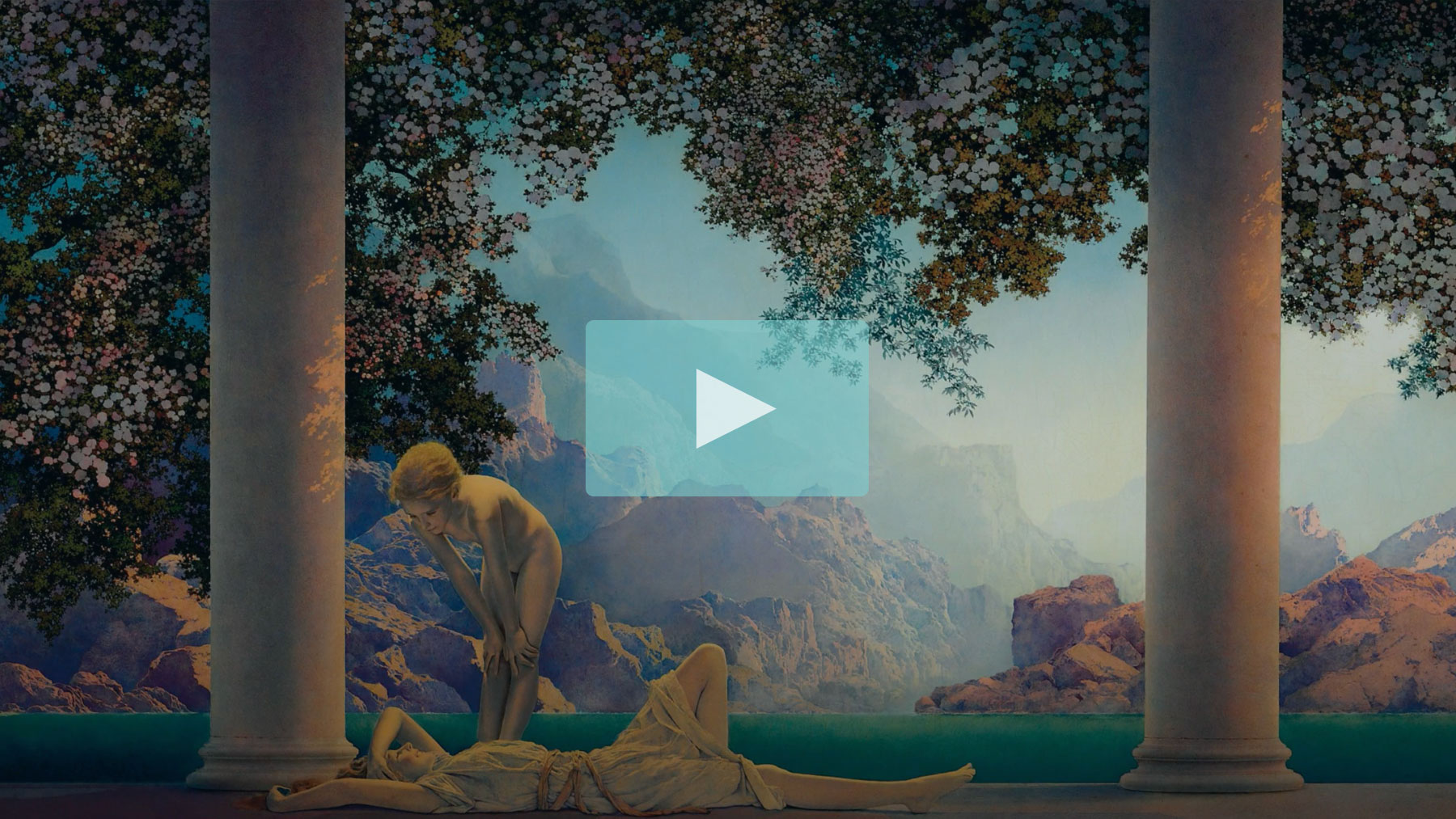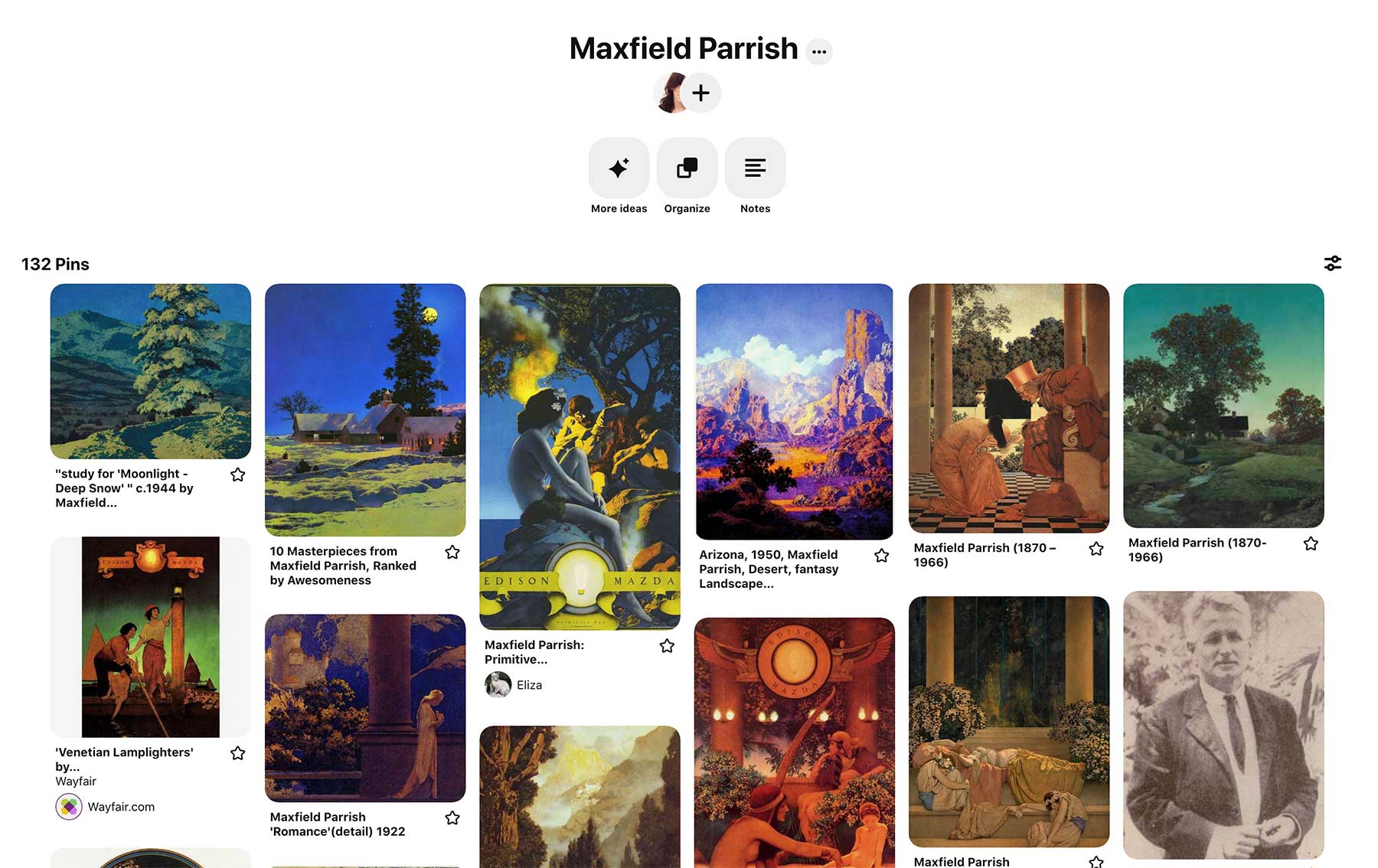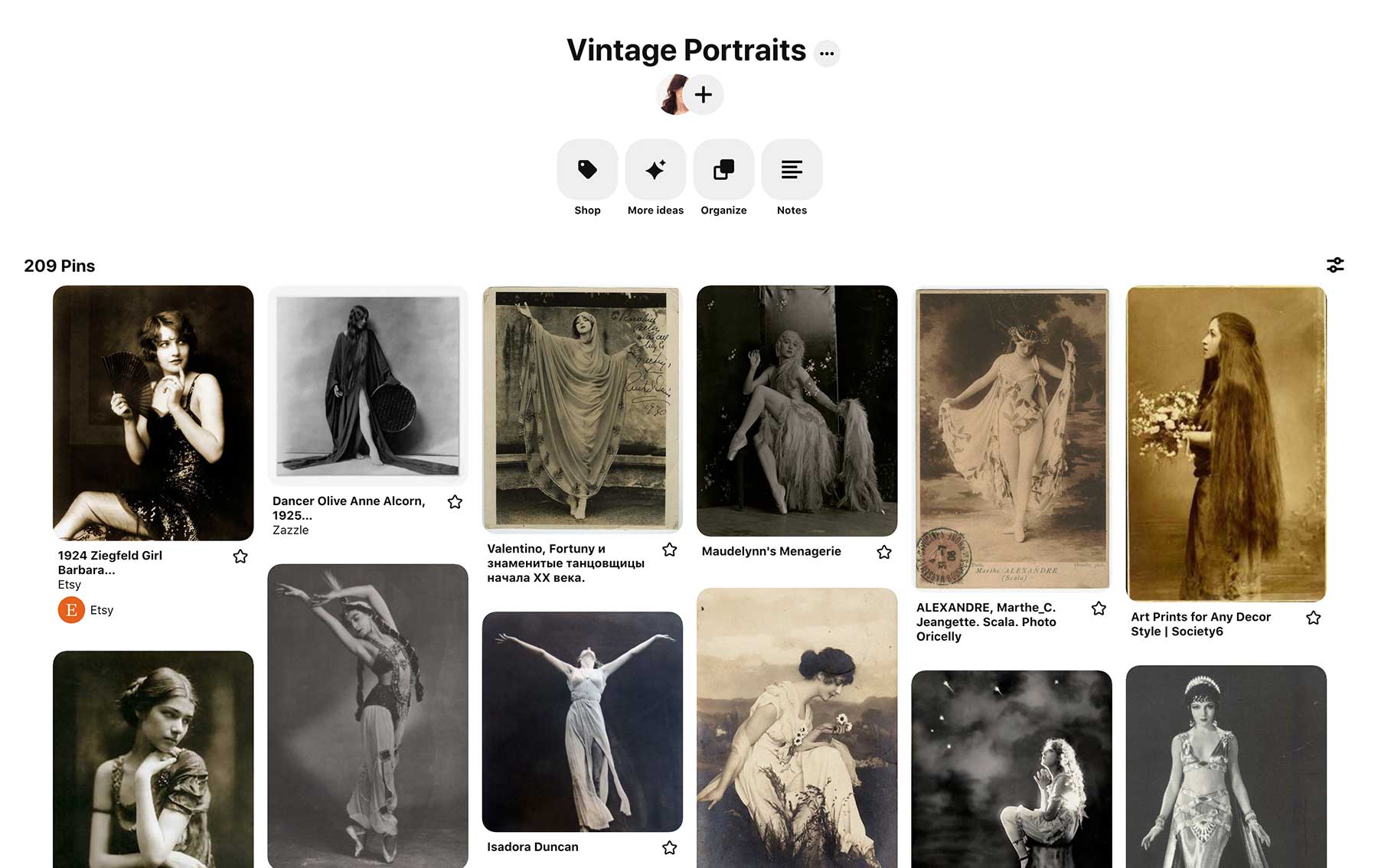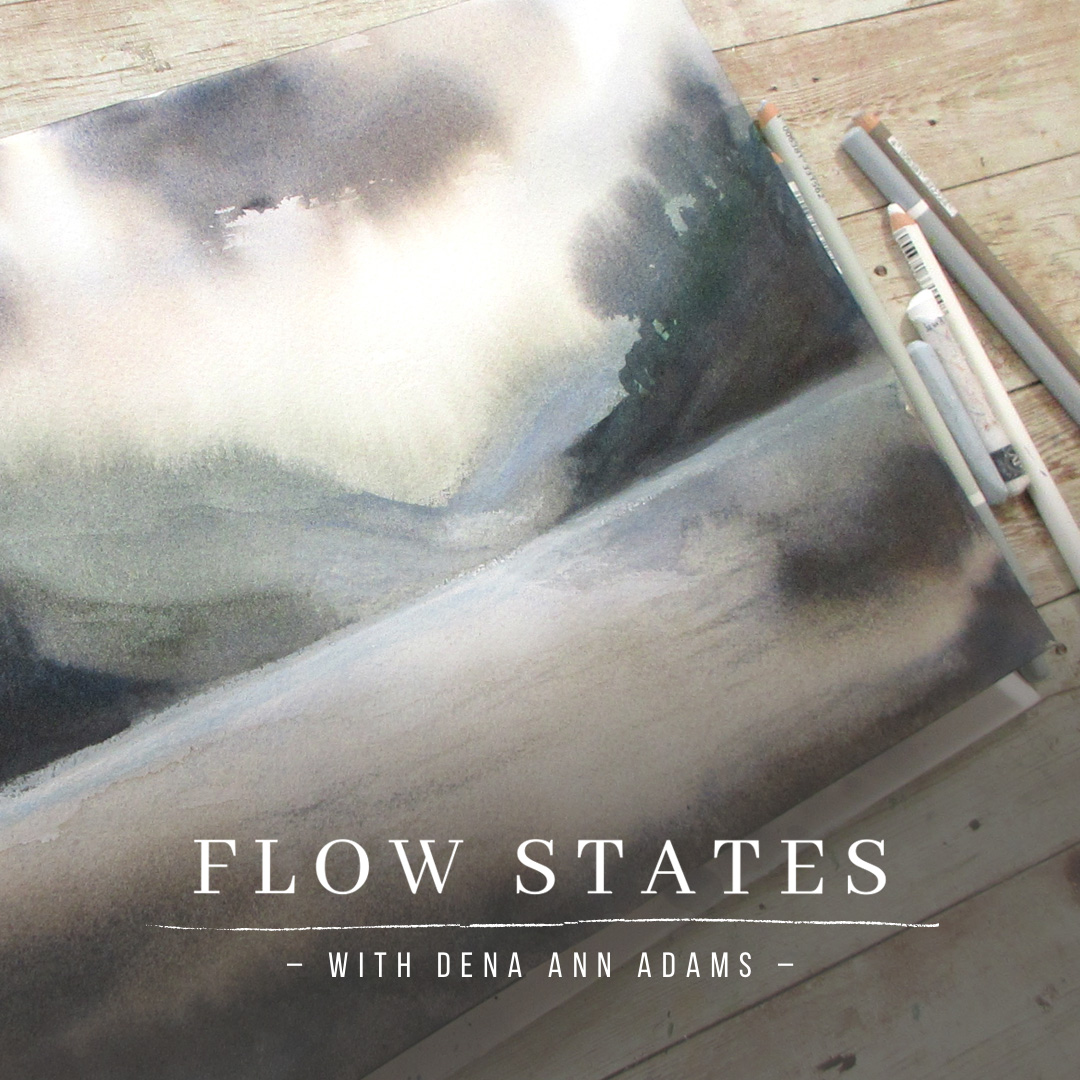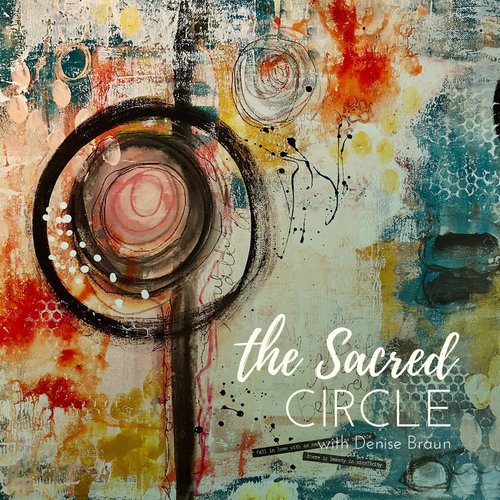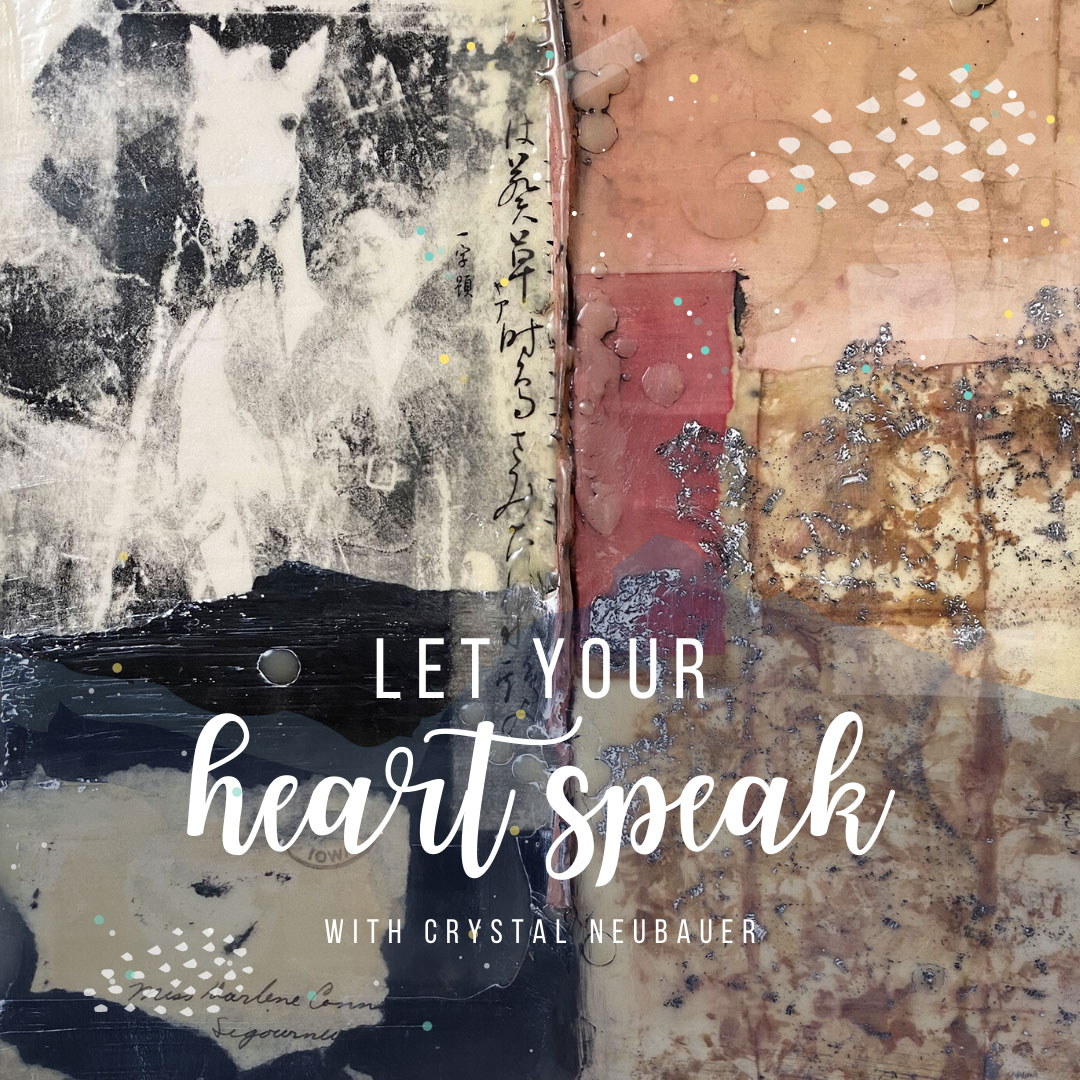IVY NEWPORT
Studioworks
Journal
a letter from ivy
Dear creative friends,
Welcome to Issue #30 of the Studioworks Journal! As always, I’m delighted you are here with me and I’m excited to share this with you. This month, I wanted to explore the idea of balance in our creative life. Is it attainable? What does that look like?
While I maintain the belief that balance is an active pursuit not some magical and permanent thing one achieves, it is worth taking a closer look at just how we can invite a more balanced and harmonious approach to our artistic path. Let’s dive deeper together.
xo,


Each issue will invite you to explore your creative practice in whichever way works for you. Experience each issue at your own pace. Take what resonates with you and put the rest aside for another time.
Grab a cup of something lovely and dive in.
in this issue…
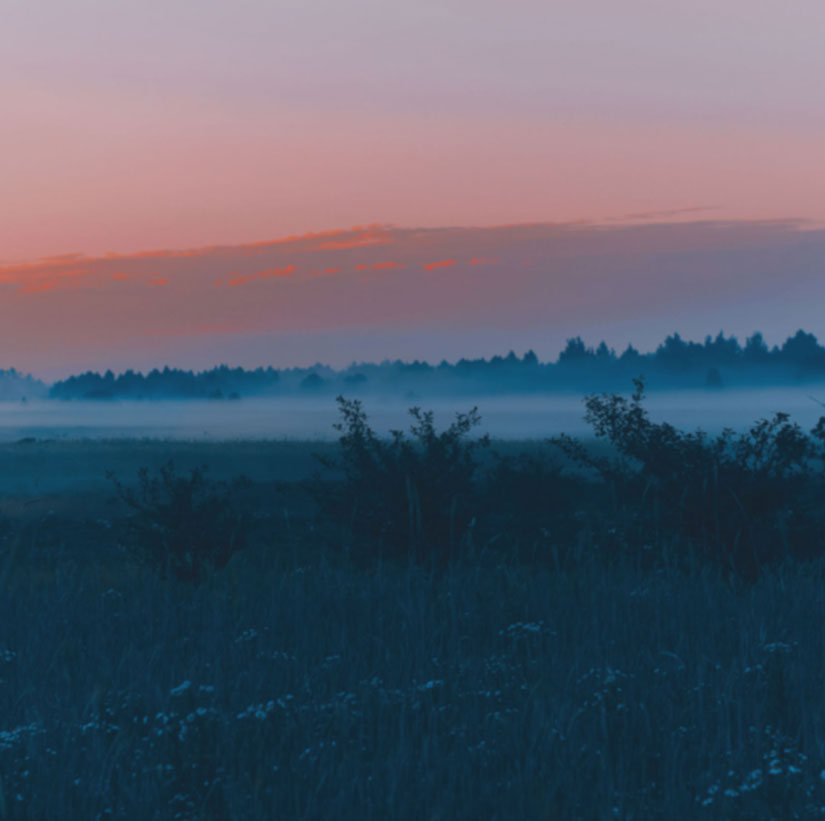
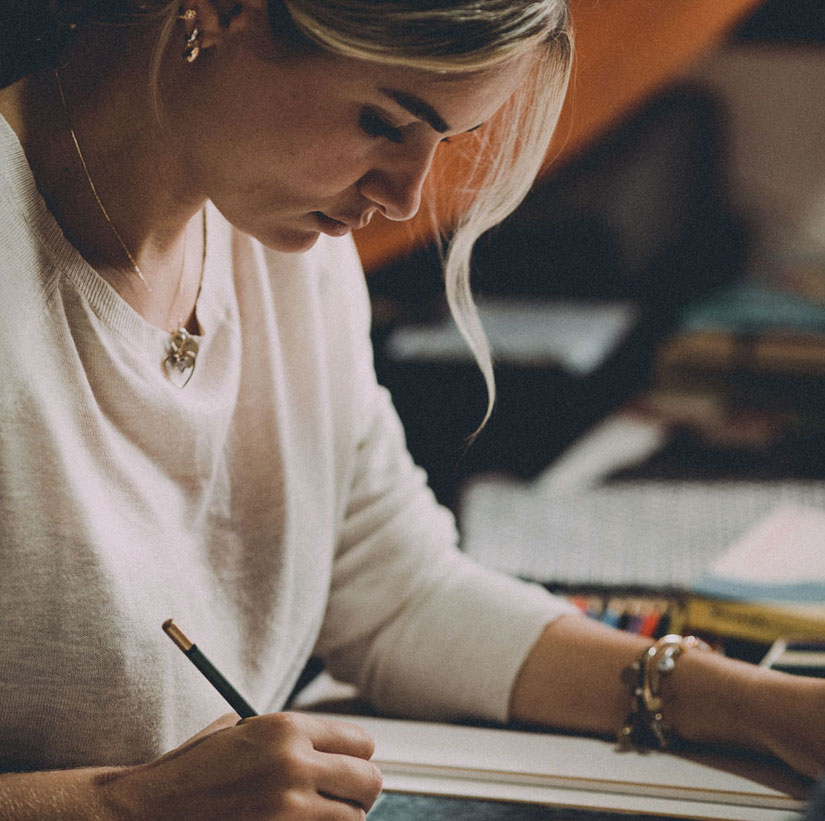
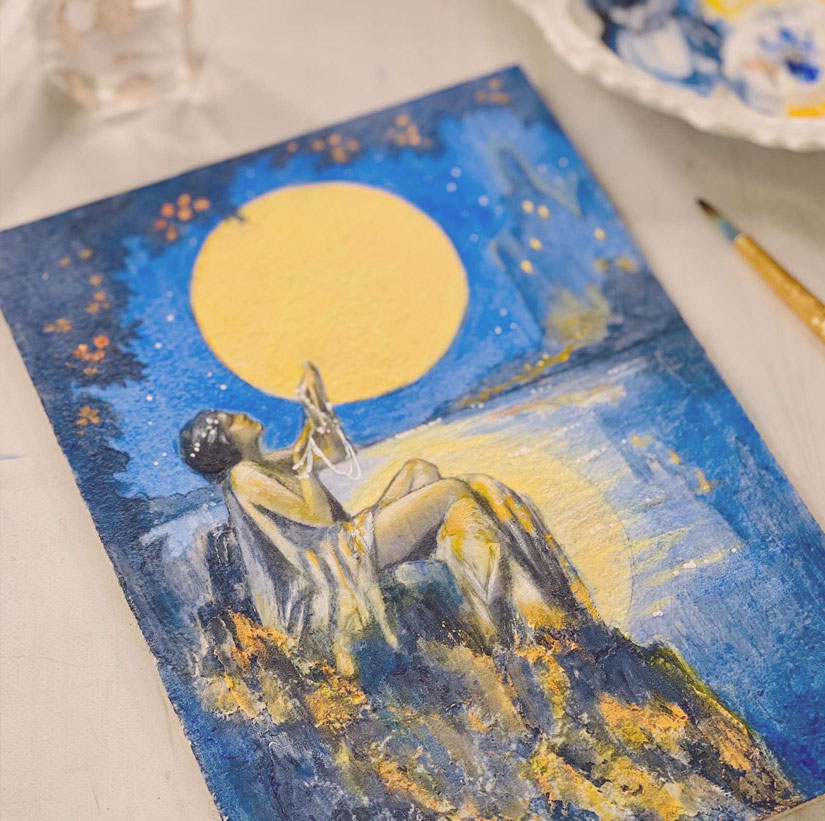
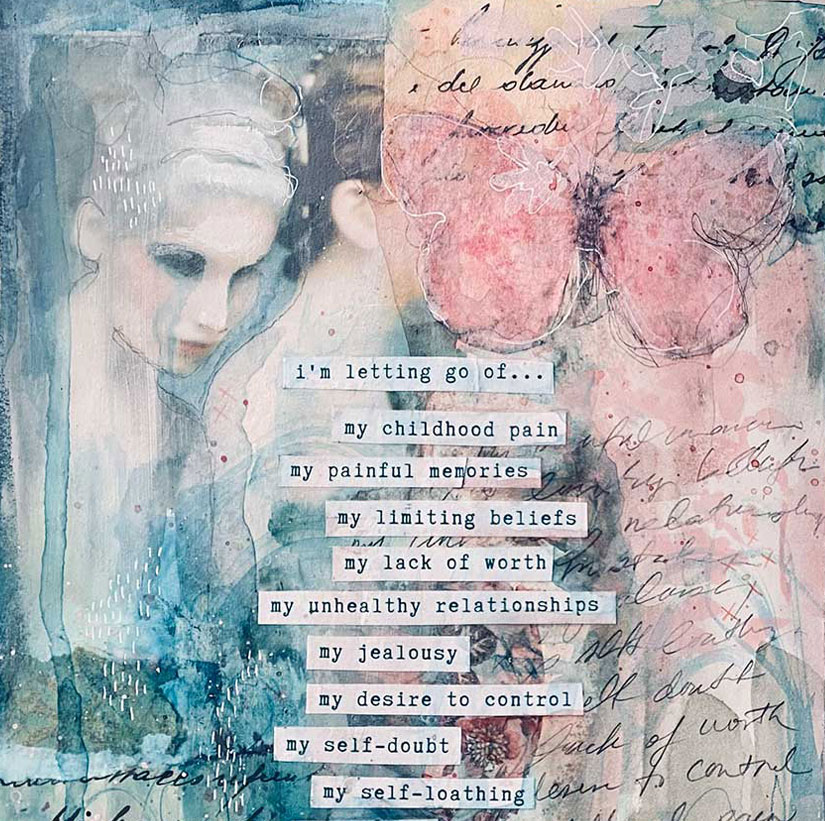
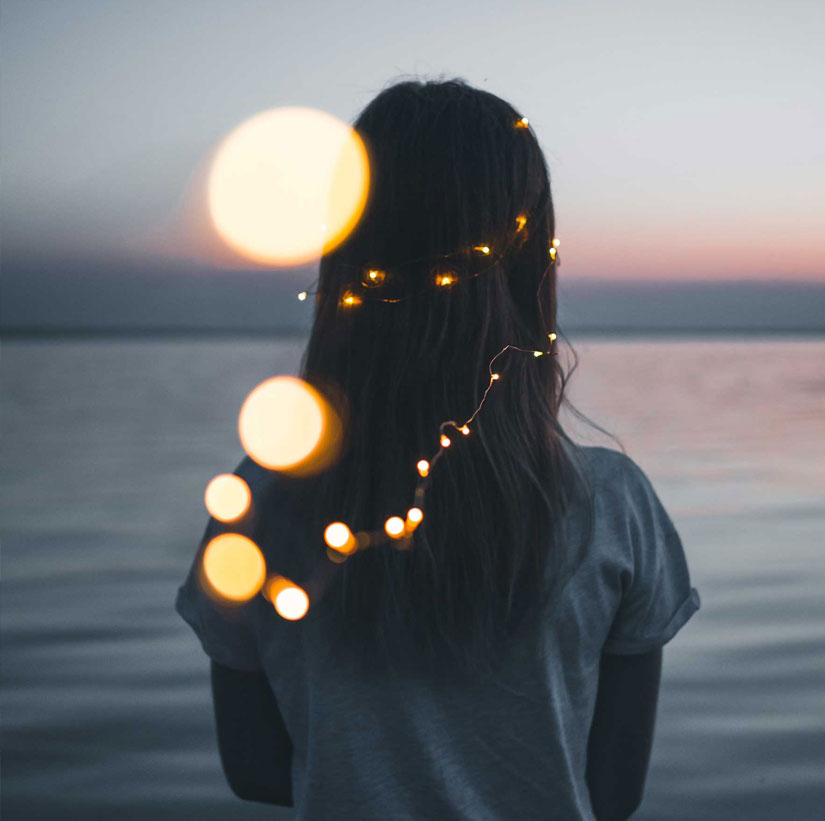
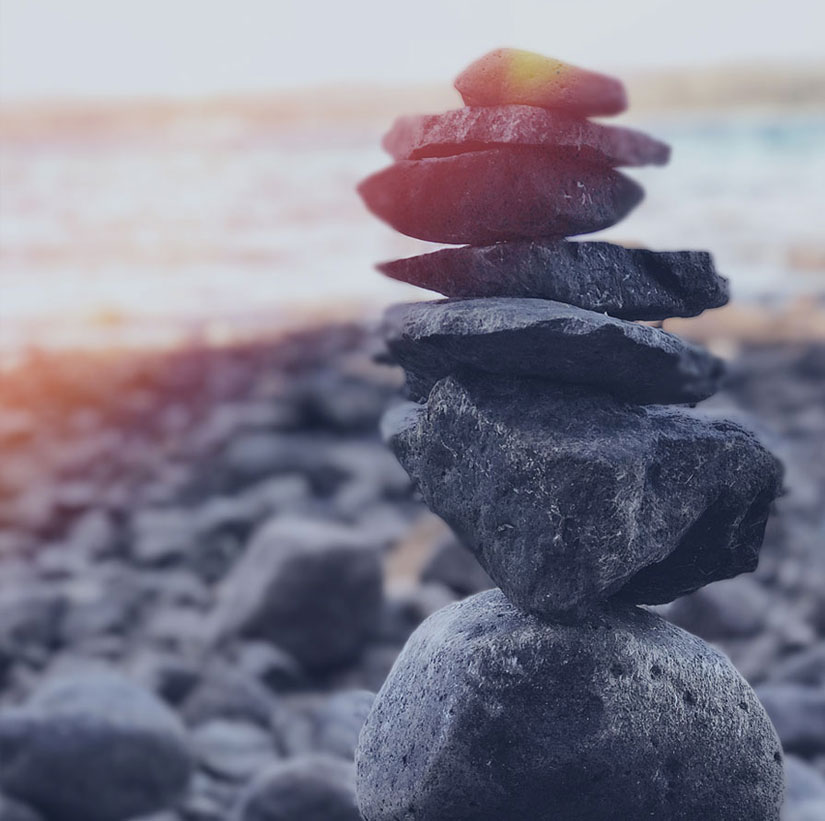
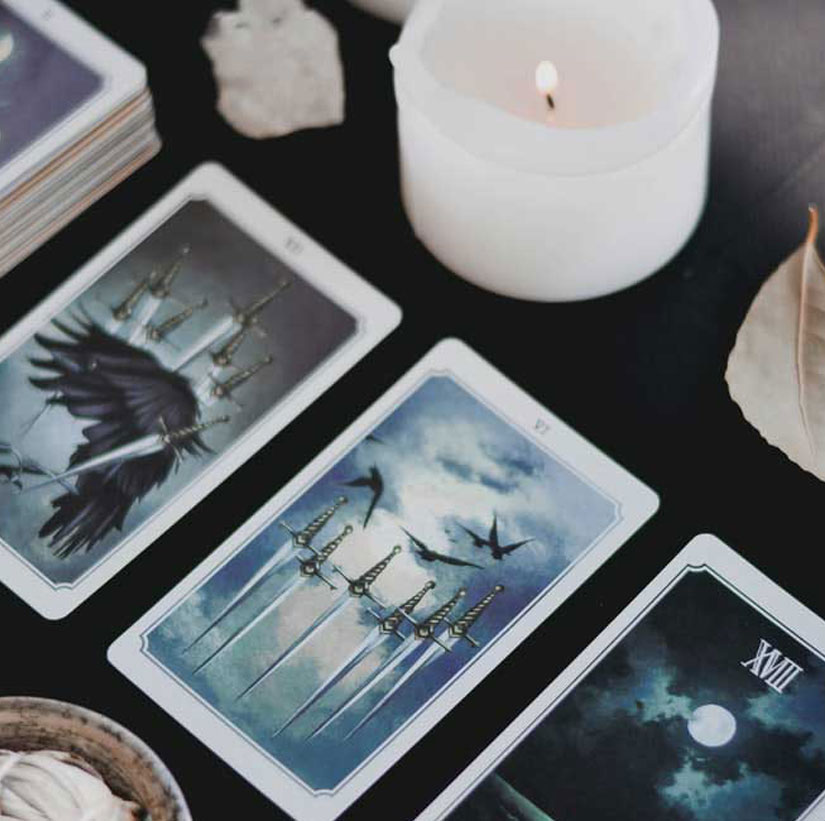
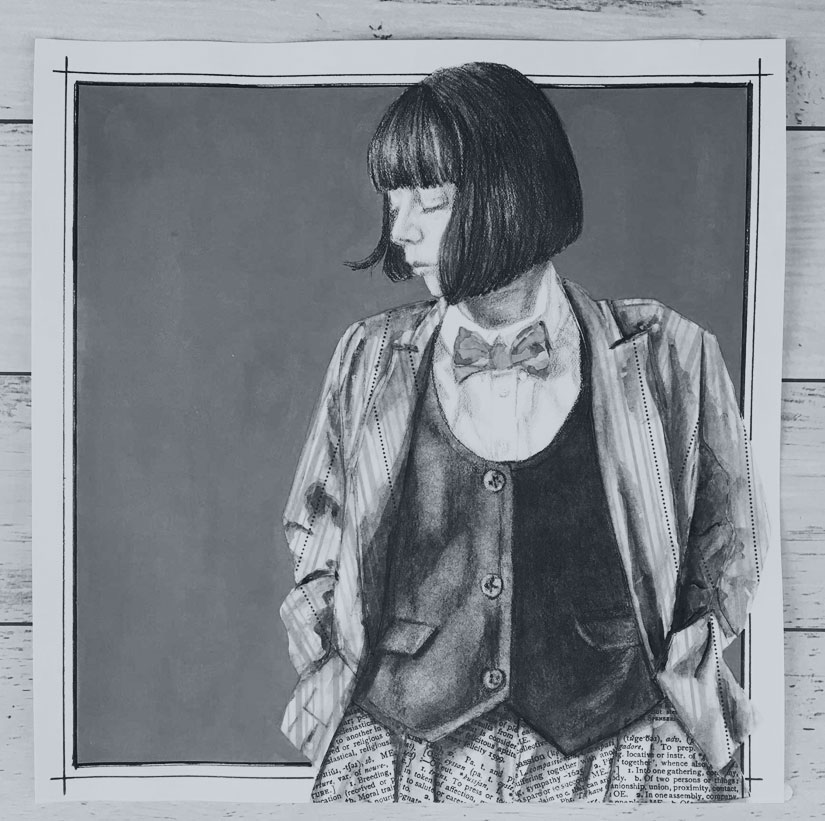
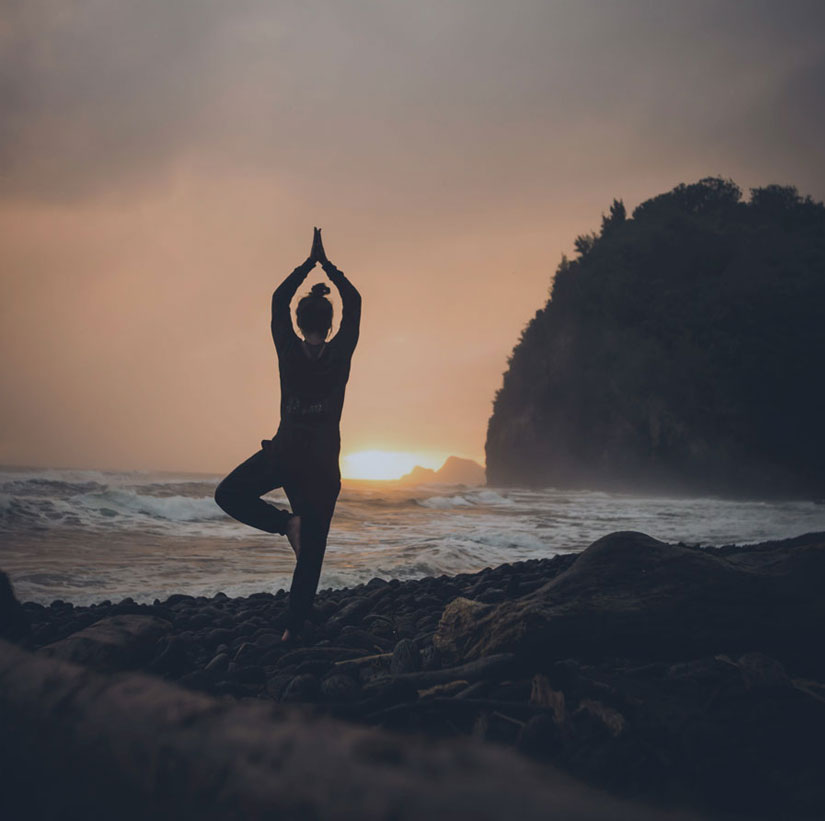
MONTHLY THEME
How to find Balance & Harmony in our Creative Life
As artists, it’s really, really easy to be pulled down the rabbit hole of our creativity. We yearn to spend hours in our studios away from all the distractions of everyday life so we can dedicate ourselves to our creations and while this is possible on some days, we all know that life isn’t that simple for most. We have responsibilities to our family, our day jobs, our friends, our home…etc the list can get pretty long! So, how do we find a way to meet our creativity in the middle, carve out precious studio time and still manage our day-to-day?
“No person, no place, and no thing has any power over us, for ‘we’ are the only thinkers in our mind. When we create peace and harmony and balance in our minds, we will find it in our lives.”
– Louise L. Hay
debunking balance
Before we do that, I want to first demystify our society’s view of “balance”. Most of us think that someone who perfectly balances their work, home, family, and friends is a rather accomplished and admirable person indeed. You know that someone who effortlessly drives the kids around, shows up on time for work, cooks a beautiful meal for her family, hosts elegant gatherings, attends yoga class, never has a hair out of place, never seems to be rushed or stressed and somehow manages to paint a masterpiece on the weekend. Yah…that girl. Know anyone like that…like for real? Oh, you don’t know anyone like that in your real life? Yah, neither do I. Why? Because they don’t exist. This fabrication of a woman who can DO everything effortlessly is a myth. Yet, we see it portrayed on social media, film and TV all the time right?
So, when we often think of leading a balanced life, we think of these fictionalized characters and we (foolishly) try to imitate them. We compare ourselves to them. We think we are too disorganized, erratic or lack the self-discipline to lead such an existence. We feel less than. Don’t do this please…or try not to. I fall into this place sometimes too, (usually it’s a sign I’ve been on Instagram too long!)
Know this – when we, as in this community, talk about balance, I want you to think of a tree swaying in the breeze, not an imaginary person perfectly living their perfectly balanced life. No way! Like art, life is messy! I wholeheartedly believe balance is an active engagement in life from a rooted center. What does that mean? Well, it means leaning in where we need to and flowing with the energies in our life. It means always honoring our roots and the strength of our trunk (self care) so that we can grow, expand and adjust to the ever changing energy of our journey. This, to me, is balance. Think about what true balance and harmony looks like to you…
“A woman in harmony with her spirit is like a river flowing, she goes where she will without pretense and arrives at her destination prepared to be herself and only herself.”
– Maya Angelou
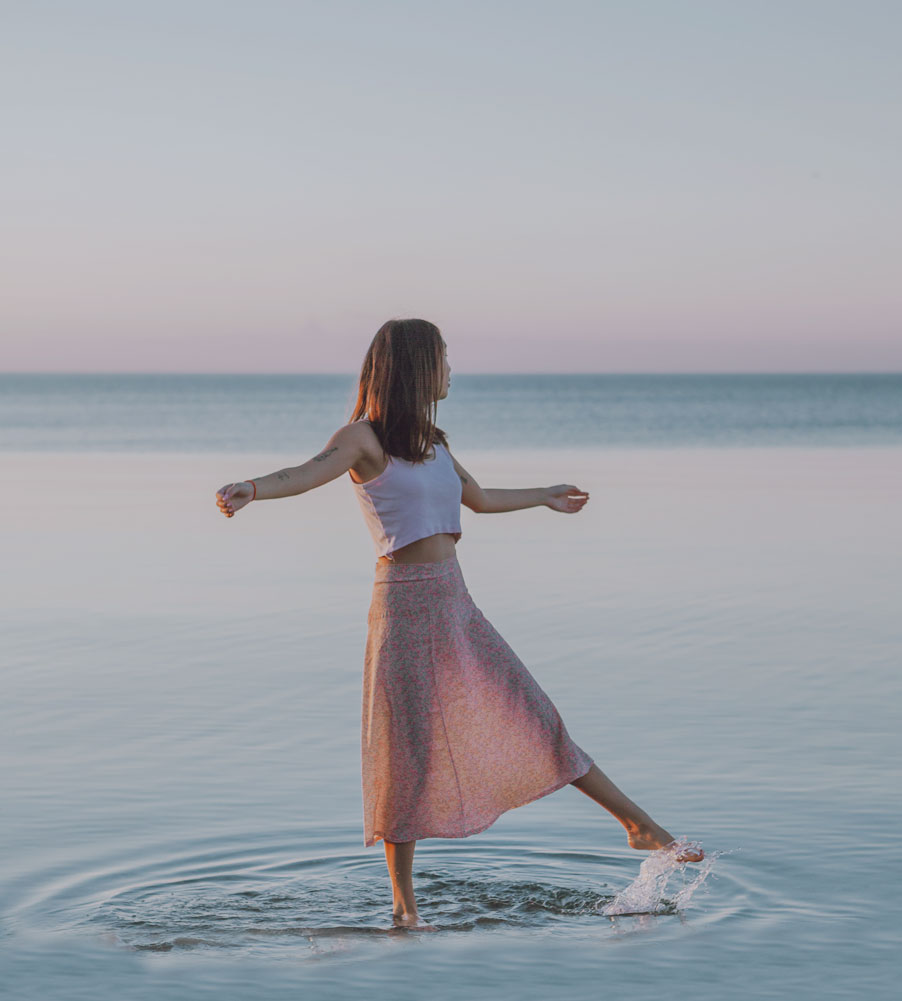
finding time for creativity
If we want to carve out more time for our creativity we need to identify the main aspects of life that feel like they are detracting from it. Let’s chat about the most common –
HOUSEHOLD CHORES
Let’s face it, it’s pretty tempting to trade doing the dishes for color swatching that new set of watercolors but remember our chores don’t have to take away from our creativity. Change your perception of your household tasks and make them opportunities to take care of your environment and cultivate creativity. Instead of dreading these tasks try this –
- Listen to music or an inspiring audiobook while doing chores. All of a sudden folding laundry is a time to dip into a fabulous story or jam out to your favorite tunes – both of which only enhance your creative mind!
- Invite mindfulness into your chores by focusing on the present moment. Slow your breathing and attune yourself to the sensations you are experiencing – i.e. the warm water on your hands while you wash dishes or the soft texture of the towels you are folding. By slowing down in a mindful way we reduce our stress and allow for more creative thoughts and ideas to surface
- Pop on a headset and call a close friend or family member and catch up while you putter around doing your chores. It’s a great time to connect while your hands are busy and we know positive human connection and communication is highly invigorating for our creative minds and hearts!
“How liberating it is to strive for wholeness instead of perfection.”
– Unknown
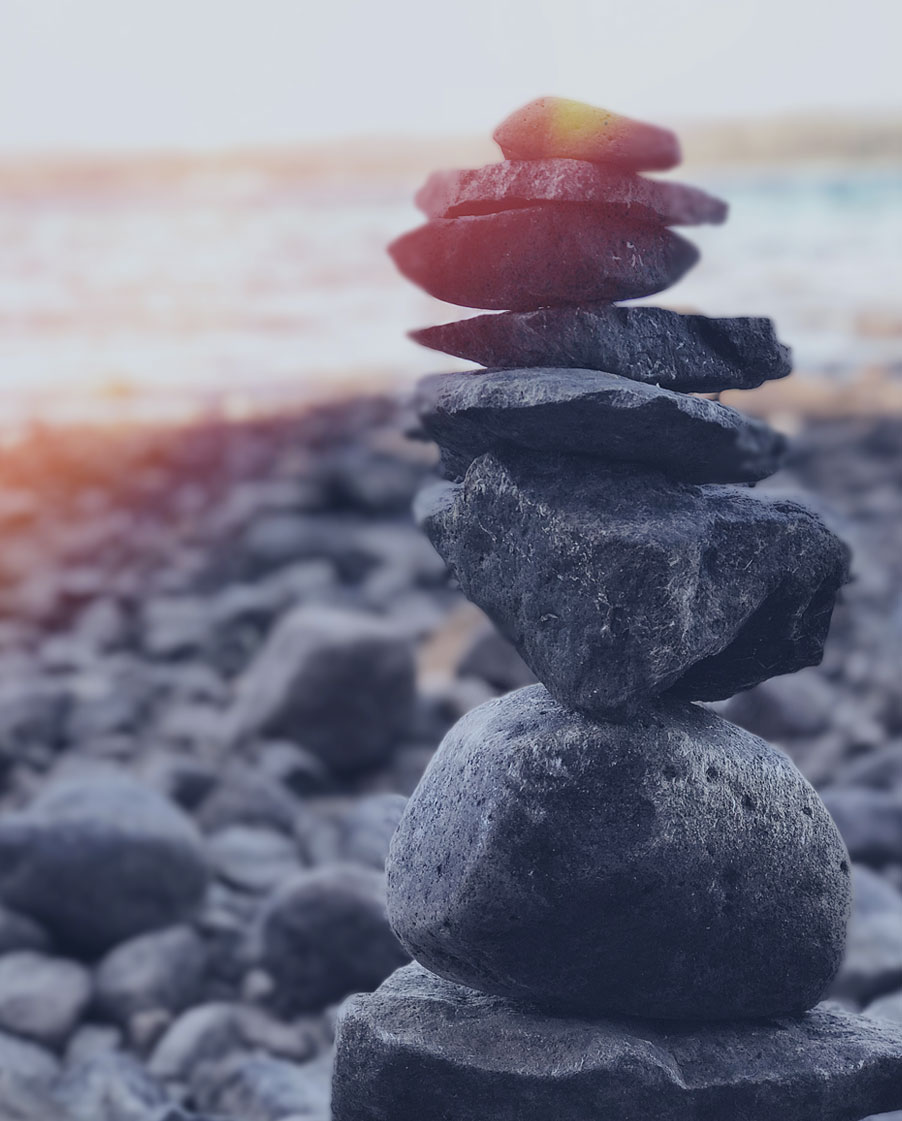
FAMILY OBLIGATIONS
We all have different obligations and responsibilities to our families whether that be meeting the needs of small children to caring for an elderly parent. Whatever your current situation is, we can relate to the fact that it is often time-consuming, emotionally charged and energetically draining. That being said, that doesn’t mean it’s negative. In fact, caring for your loved ones often (hopefully) brings incredible love, joy and fulfillment to our lives! Being with the ones we hold dear is what making memories is all about right!? But when we yearn to be alone in our studios or that latest painting is beckoning us, how do we make time and not feel guilty?
- Set boundaries. I’ve said it before and I know you’ve heard it before but it is worth saying again! So often we just keep saying YES before we check in with ourselves. Remember, you can’t pour from an empty cup right? Setting healthy boundaries with our loved ones is all about self care – a necessary and vital element in a harmonious creative life. Before you say yes to that 3rd round of hide and seek with your kids check in. Are you feeling tired? Hungry? Do you need to take a minute to yourself? Being honest with our kids about our well being teaches them to take the time to notice their own feelings. If you are committed to go visit an elderly parent weekly, that’s wonderful but can you also commit to taking yourself out to a coffee or a quiet walk in a favorite place?
- Make rules about your creative space. Your studio or designated creative space is a sacred space, so treat it like one and teach those in your life to treat it as such too. It’s ok to say – NO toys in Mom’s studio OR tell your partner not to dump their work stuff on your creative desk. There is that old adage – “You teach people how to treat you.” And yeah, well…can’t argue with that right? So, remember that the next time you let your loved ones steamroll over you.
- Drop the guilt. Guilt is a tricky thing and it’s not easy to leave behind but know this – guilt doesn’t serve you and it doesn’t serve anyone you love either. I’m not talking about having guilt over doing something wrong but rather that nagging guilt that likes to shame and berate you for not doing enough. This kind of guilt is a device of the ego to make you feel bad about yourself. It leads to negative self talk, ignoring your own self care and ultimately to resentment. Yes – after all that guilt and shame you just end up resenting the very people you are trying to love and care for!! Ugh…no thanks. If you find yourself here a lot….go back and look at your boundaries (or lack thereof).
“We need to do a better job of putting ourselves higher on our own ‘To Do’ list”
– Michelle Obama
Work aka Your Day Job
While some of us in this community may be retired, others are still managing a full or part-time job. Balancing this with your creative life, family, friends and everything else is no small task, however sometimes what is most required is a perspective shift.
- Identify the Positives. Question the Negatives. If you dislike your current job how can you shift how you feel about it? Can you identify some aspects or people you DO enjoy about your work? What and who are they? What aspects of your job are you grateful for? Write it down! How can you lean into these more? Now, alternatively, question the negatives. Why do I dislike this task? Why does this person rub me the wrong way? Etc. Be open, non-judgmental and honest when you go to answer these questions. Realize that there is wisdom to be found here. Journaling about these questions can bring great awareness and understanding. Once we understand why we resist something we can begin to change it.
- Activate your Creative Mind. Begin to challenge yourself to find some new solutions to the challenges you might be facing. Consider all the possibilities! For example – Can you strike up a new friendship or connection with another creative person at work? Could you take long walks at the park across the street from your office on your lunch breaks and find nourishment there? Can you get up extra early to squeeze in some creative time before you jet off to work? Or perhaps you could change your schedule so you could get an afternoon or whole day off that you can dedicate to your creativity. Think creatively about the negative situations in your life and you CAN figure out ways to shift them. That beautiful big creative mind of yours is NOT just for the studio! Get it working and imagining and dreaming about some of the obstacles on your path!
- Protect your time off. When you DO get time off, protect it! Your time away from work is a precious commodity and one that should be filled with activities that fuel your creativity and well-being. Yes, I know some of that time off might be filled with chores and family obligations too…(see Chores and Family Obligations above) but make sure you designate time to be creative. By honoring your artistic time, you will have more energy, more joy and a better sense of balance in your life.
“Don’t get so busy making a living that you forget to make a Life.”
– Dolly Parton
Balancing our creative life with our obligations, responsibilities and chores isn’t an easy task but if we stay mindful of our self care, be honest with ourselves about what we want and need and effectively communicate with those in our lives, we can find both harmony and balance as we travel our artistic path. Remember that balance involves flexibility not rigidity, grace and compassion not shame and guilt. Sway with the breeze and you’re much less likely to snap.
“Life is a balance between what we can control and what we cannot. I am learning to live between effort and surrender.”
– Danielle Ornery
How to find Balance & Harmony in our Creative Life
7 Tips for keeping your creative energy high
Now that we have some ideas about navigating some of the responsibilities and tasks we face in our daily lives let’s think about some fabulous ways to keep your creative energy high! Check out this fun list of ideas…
1. Keep a little book of ideas. Don’t leave home without this – you never know when an idea might spark or a beautiful detail might need to be recorded. Having this sweet creative companion with you is a reminder to your inner artist that we are always listening to our muses! I’ve had incredible ideas come to me while checking out at the grocery store!
2. See the world through your Artist’s Eyes. As you go about your day and run your errands keep those eyes open for beauty! Look at the colors you see in the trees or the shapes of the clouds in the sky. Watch for beautiful patterns on walls and sidewalks as light and shadow play. Stop and watch a child run or a dog leap in the air to catch a ball, delight in the movement you see. Notice a tiny flower creeping up through the crack on the sidewalk. There is beauty everywhere. Drink it in.
3. Open your ears. Listen for words, songs and stories that spark your imagination. It could be an interesting account from the person behind you on the bus to a song playing in a department store. Keep your ears pricked for captivating moments. I’ve heard of writers that jot down parts of sentences they overhear and build entire stories around them!
4. Pack an art kit. Build a sweet, simple and small art kit that can go with you wherever your day takes you. You might squeeze in a sketch picking up the kids from school or waiting at the dentist’s office. Bare minimum – a small sketchbook, a couple of favorite pencils and pens and an eraser. Boom. You are ready to create on the go! No excuses!
5. Take a nap. Ha! I know that sounds counterintuitive but the key to staying high with your creativity is being well rested. We don’t tend to produce our best work when we are tired, irritable and drained. So if you can, slip a 20-30 minutes snooze into your day, go for it!
6. Get out of your box. Stuck in a routine? Always take the same route to work or walk the same way with the dog? Switch it up! Drive some back roads and see new things, meander down a path you don’t usually travel. Try a new cafe to grab coffee or check out that new park. Wear that bright purple sweater you never wear. New experiences lead to new ideas so get out of your box and do something a bit different.
7. Learn about something. Your creative mind loves to learn! So give it something to muse over and dive into a topic you’ve always wanted to know more about. It could be a new cookbook or a travel blog on Greece. It could be reading up on gardening or taking dance lessons. As you guys know, Art history and travel really jazz up my muse. So find something you are curious about and geek out. Jot down any new ideas or discoveries you uncover. Learning almost always leads to inspiration.
“Balance is not something you “find”, it’s something you create.”
– Jana Kingsford
7 Tips for keeping your creative energy high
I love this poem by Danna Faulds that beautifully reminds us to slow down and appreciate our lives. It’s so easy to rush around and not be keenly aware of the beautiful unfolding of our existence. It is in this space where we can find room for more equilibrium, more peace, more balance, more gratitude.
Walk Slowly
It only takes a reminder to breathe,
a moment to be still, and just like that,
something in me settles, softens, makes
space for imperfection. The harsh voice
of judgment drops to a whisper and I
remember again that life isn’t a relay
race; that we will all cross the finish
line; that waking up to life is what we
were born for. As many times as I
forget, catch myself charging forward
without even knowing where I’m going,
that many times I can make the choice
to stop, to breathe, and be, and walk
slowly into the mystery.
-Danna Faulds
Check out some of Danna’s books here
Walk Slowly
CREATIVE INTUITION
with Elizabeth Cooper
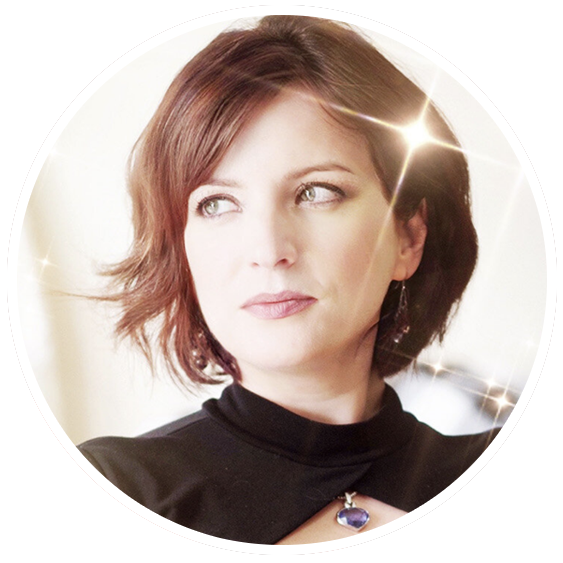
I’m excited to announce that my dear friend and fellow artist will be a regular contributor to the Studioworks Journal! She is my go-to when learning more about my intuition and integrating it into my creative practice. This month she’s got a beautiful guide on using the Tarot to discover more about our inner Artist and NO this isn’t about fortune telling!
I love the advice she gives here so, do check it out, even if you are not familiar with the Tarot…we can find symbolism and visual cues for our creative voice in so many ways!
(You also might notice that many of our Master Artist’s work – Maxfield Parrish has motifs and themes similar to many cards in the Tarot! Love that connection!)
Seven Ways to Discover Your Unique Artist’s Voice Using Tarot
As a romance novelist for Harlequin in my early 20s, I turned to tarot cards to help me discover and hone my creative voice.
A decade later, when my path led me from writing fiction to painting mixed media portraits, I once again asked my trusted tarot deck for guidance. And just like before, when I accessed the portal to my intuition, my authentic artist voice came flooding out.
You see, although tarot can be used in many ways (to connect with Source, as a divinatory practice, in spiritual rituals, etc.), my preferred method has always been to use tarot for self-reflection. Each of the 78 cards serves as a mirror we can glance into and learn more about ourselves. As writer Anaïs Nin said, “We don’t see things as they are; we see them as we are.” This is especially true when we glance at a tarot card and extract meaning.
Here are a few strategies to get you started using tarot to discover your own unique artist’s voice.
#1. Explore deck aesthetics.
Whether you’re a tarot newbie choosing your first deck, or you’ve been using the cards for years and have an extensive collection, the first step is selecting a deck that speaks to your artist’s soul.
In today’s marketplace, we have a vast selection of decks to choose from. There are traditional decks and whimsical decks. Abstract decks and animal-based decks. There are decks for everyday use and decks meant to be pulled out at certain times of the year. Really, your options are endless.
This is excellent news for your inner artist, who loves to play, explore, and discover.
If the option is available to you, I suggest walking into a store and browsing the shelves. You’ll be able to examine deck packaging, flip the box over and gaze at the sample cards printed on the back.
Alternatively, you can browse online. Many sites offer a full array of images showcasing the cards inside.
Watch for signals from your inner voice letting you know which deck to choose. Perhaps you have an initial idea about the type of deck you’ll get. A traditional one, for example, or a deck recommended by a friend. Yet, you may find yourself pulled toward the modern decks illustrated with images of playful cats, whimsical fairies, or grinning gnomes. Your willingness to stay open to what truly speaks to you is the first step in exploring your creative voice.
This work is not about who you think you should be as an artist but about who you really are.
So take home the cat deck. The messages you receive from those cards will be much more meaningful than those from a more traditional, “respectable” deck.
#2. Find your personal symbols.
Now that you have your deck in hand, it’s time to make a personal connection.
Go through the cards, one by one. Examine the imagery, and look for symbols that spark a sensation in your body. Does the moon call to you? Are you drawn to silhouettes of birds? Do you find your attention captured by simple geometric shapes? If so, set those cards aside.
Next, grab your sketchbook and recreate each symbol in your own hand. You don’t have to duplicate the design from your tarot cards. Let yourself play. Allow the symbol to shift and evolve as you recreate it as many times as you’d like. Before you know it, you’ll have a library of personally meaningful symbols to incorporate into your artwork.
#3. Choose a card to represent your artistic vision.
Who do you want to be as an artist?
If you’re struggling to answer, make a list of the artists you admire. Then think about where you’d like to be a decade from now. Do you see yourself creating large-scale abstract paintings? Bright and cheerful florals? Highly realistic portraits?
There’s no right or wrong answer here, and your path may shift as you progress. Think deeply about where you are now and where you want to be. Then imagine yourself as though you were that artist already.
Next, lay out the cards in front of you in any way you’d like. One at a time, or as a big jumbled pile spread out on your table.
Look through the imagery and set aside the cards that represent your vision made reality. Perhaps you’ll find yourself drawn to an image of a beautiful rose if you imagine yourself painting florals. Or maybe you’re drawn to kids playing on the beach if you’ve thought about illustrating children’s books. Set aside all the cards that speak to you in this way, and then choose the one that has the most potent energy representing your vision made reality.
#4. Map out your energetic influences.
For this exercise, draw a card at random. You may choose to shuffle first, cut the deck, or simply lay out the cards face down and select one.
Flip it over, and observe it for at least a full minute. Familiarize yourself with the central figure(s), the colors, the themes, and the overall mood of the card.
Then imagine yourself stepping into the scene. You may close your eyes if that’s easier, or keep them open if you’d like.
What do you notice? Use all five senses and explore the imaginary realm expanding all around you. Are birds chirping in the trees or people murmuring quietly nearby? Can you taste the figs hanging full on the branches or the cold water burbling in the nearby brook? When you take a deep breath, can you smell the ocean? Everything that stands out to you as you visualize yourself inside the card points to the energies at play in your life and in your art. You’ll want to pay attention to what comes up.
You can stay here for as long as you’d like. Observe like a proverbial fly on the wall, or engage in conversation with the figure(s) in the card.
Then, when you’re ready, step out and return your attention to your own reality. Make notes, and then brainstorm how you can bring those sensual experiences into your next artistic work.
#5. Identify your artistic triggers.
Only engage in this exercise when you’re feeling calm, peaceful, and relaxed. You’ll want to use plenty of self-compassion as you progress. When you’re feeling well supported, this is a great exercise to help you process difficult emotions through spirituality and personal expression.
First, go through the deck again with intention. Look for the cards that generate a visceral negative response inside you. You may find yourself recoiling from a figure looking haggard and withdrawn. Or perhaps your heart beats faster when you flip over a card showing a child crying over a broken toy. Set these cards aside, and keep going until you’ve explored every card in the deck.
Then look through the cards you’ve selected. One by one, determine the emotions you’re feeling. Is that your own exhaustion reflected back at you? Is pity or deep empathy squeezing your heart? Work backwards from there to find out what’s causing the emotional trigger. Is it a symbol? The look on a figure’s face? The scenario being portrayed?
If you could use art to express your feelings about the trigger(s) you’ve identified, how would you do it?
Expressing powerful emotions through art can be incredibly healing, not just for the artist but also for anyone who comes into contact with the work.
Your personal emotional triggers are always informing your artist’s voice, whether you choose to address them head-on in your art or not. Even if you never specifically create a painting or a sculpture to reflect your inner landscape, it helps to understand your own emotional makeup.
#6. Create a library of personal artist prompts.
How often have you felt paralyzed by the blank page? If you’re like most artists I know, it’s probably happened more often than you’d like.
Keeping a tarot deck in your studio allows you to pull from an infinite number of prompts that are personally meaningful to you.
Simply draw a card at random. Flip it over, and look for imagery, symbols, feelings and characters that mirror your own life experience.
Then, focus on those with the most powerful emotional resonance. Without overthinking it, come up with a word or phrase to reflect what you’re seeing, feeling, or recalling.
The prompt then becomes something as simple as “gratitude,” “a childhood memory,” or “true love.”
#7. Assemble your Artist’s Council.
Creating an Artist’s Council is the exercise my clients connect with the most and the one I return to when I’m feeling creatively blocked or uncertain.
To start, separate the Major Arcana and look through the cards. Choose 3-5 archetypes that will make up your Artist’s Council. You’ll want to select those that call out to you. For example, the Hermit may offer you lessons in seclusion, while the High Priestess could help you connect with the mysteries of your subconscious.
The archetypes you’ve selected will serve as your guides and trusted advisors. Lay out the cards in front of you and imagine meeting this group assembled at a round table. (Make sure you save yourself a seat!)
Ask specific questions and listen for the answer. Converse with the figures. Allow your imagination to roam, and don’t block what you’re “hearing.” It may seem as though you’re just making things up, but you’ll be surprised at the way their answers differ from one another and how their varied perspectives help you shift your own.
Return to this council as often as you’d like. Whether you’re asking for advice on recovering from burnout or deciding on the subject of your next piece, the more frequently you check in with these archetypes, the more in tune you’ll become with their wisdom and guidance.
That’s true for all the work you do with tarot. Connect frequently with your chosen deck to tap into your intuitive wisdom and discover an endless well of inspiration, creativity, and artistic authenticity.
Each time you do one of the exercises above, what you learn about yourself as an artist will shift. That’s because you are constantly changing, growing, and evolving. The wisdom you gain will continue to expand your self-concept, and as you return to this ongoing process, you’ll feel more at ease with who you are, deep down at your artistic core.
Elizabeth Cooper is an artist and holistic coach specializing in helping frustrated creatives identify, develop and showcase their signature body of work. Learn more about her via her website: www.flutterandsprout.com
“Art is my cure to all this madness, sadness and loss of belonging in the world & through it I’ll walk myself home.”
– Nikki Rowe
Balanced Artist PROMPT:
- Check in with yourself. To lead a more fluid and balanced creative life we need to practice self care. Take 15-30 minutes today and do something that feels nourishing to you. It could be quietly sketching, going for a walk, reading a good book…etc.
WORD OF THE MONTH
Balance
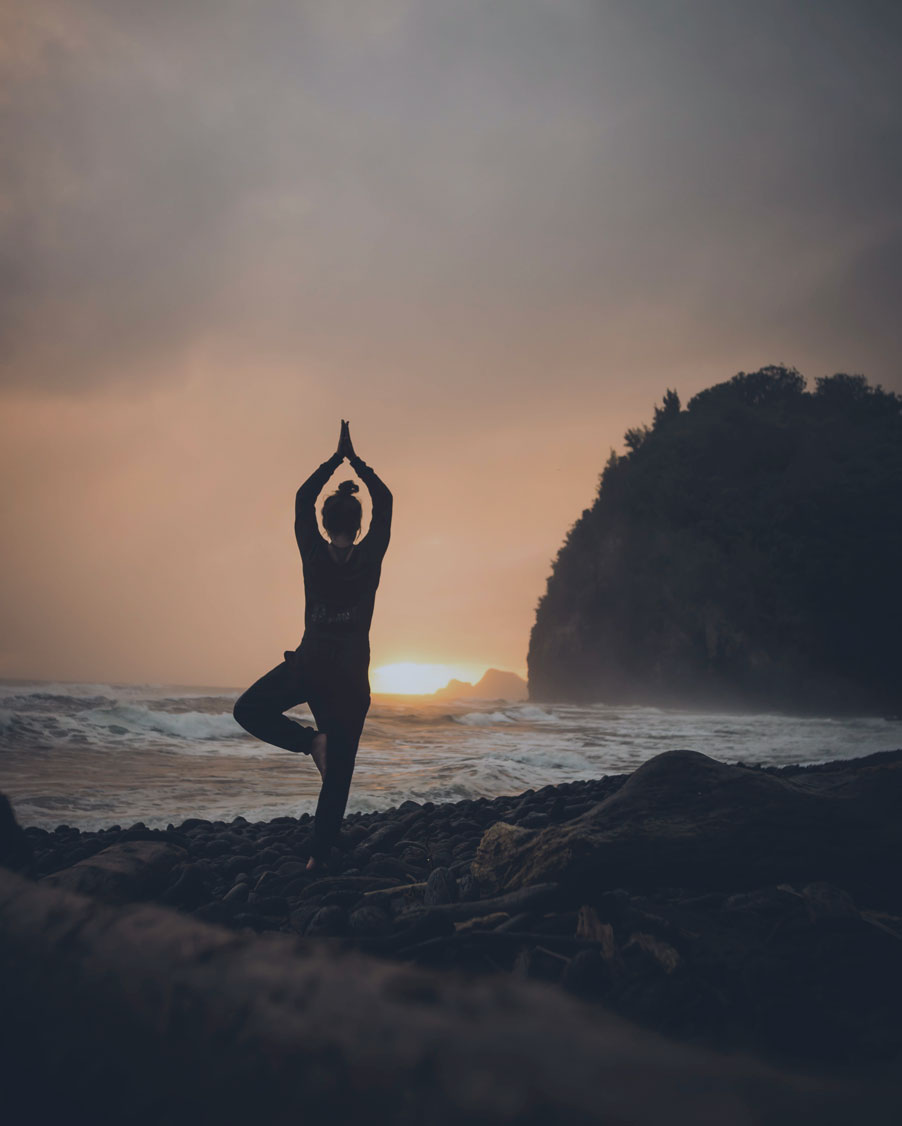
DEFINITION – BALANCE
verb – To be in or come into equilibrium; to make or keep steady ; to keep from falling.
Defining the word balance as a verb not an adjective reminds us that, as mentioned before, balance is an active choice. It is not a permanent state, or an unchangeable achievement but rather a fluid dance between what pulls us in life. To sustain equilibrium we must allow things to flow through us, staying keenly aware of our center.
“My creative life is a constant struggle to achieve a balance between letting things flow in and letting things flow out.“
– Don Henly
Grounding into Heart Energy Meditation
WITH RACHEL HILLARY
As we cultivate more balance and harmony in our creative life, let’s not forget how important it is to come back to our center and reconnect with our hearts. Practicing this is incredibly self-compassionate and grounding. So let’s do a beautiful meditation that can aid us.
I’ll let one of my favorite meditation creators, Rachel Hillary, share a little about this guided journey –
This is a gentle guided meditation which is designed to enable you to find the sanctuary within. In this time there is so much noise, guidance and advice everywhere, this piece is created to root you back into source, back into your heart, to expand your heart energies and frequencies and listen to your own truth and knowing. Come back to yourself, come back to your heart.
xo,
Rachel
Grounding into Heart Energy Meditation
You can download more meditations and connect with Rachel here…
Monthly Affirmation
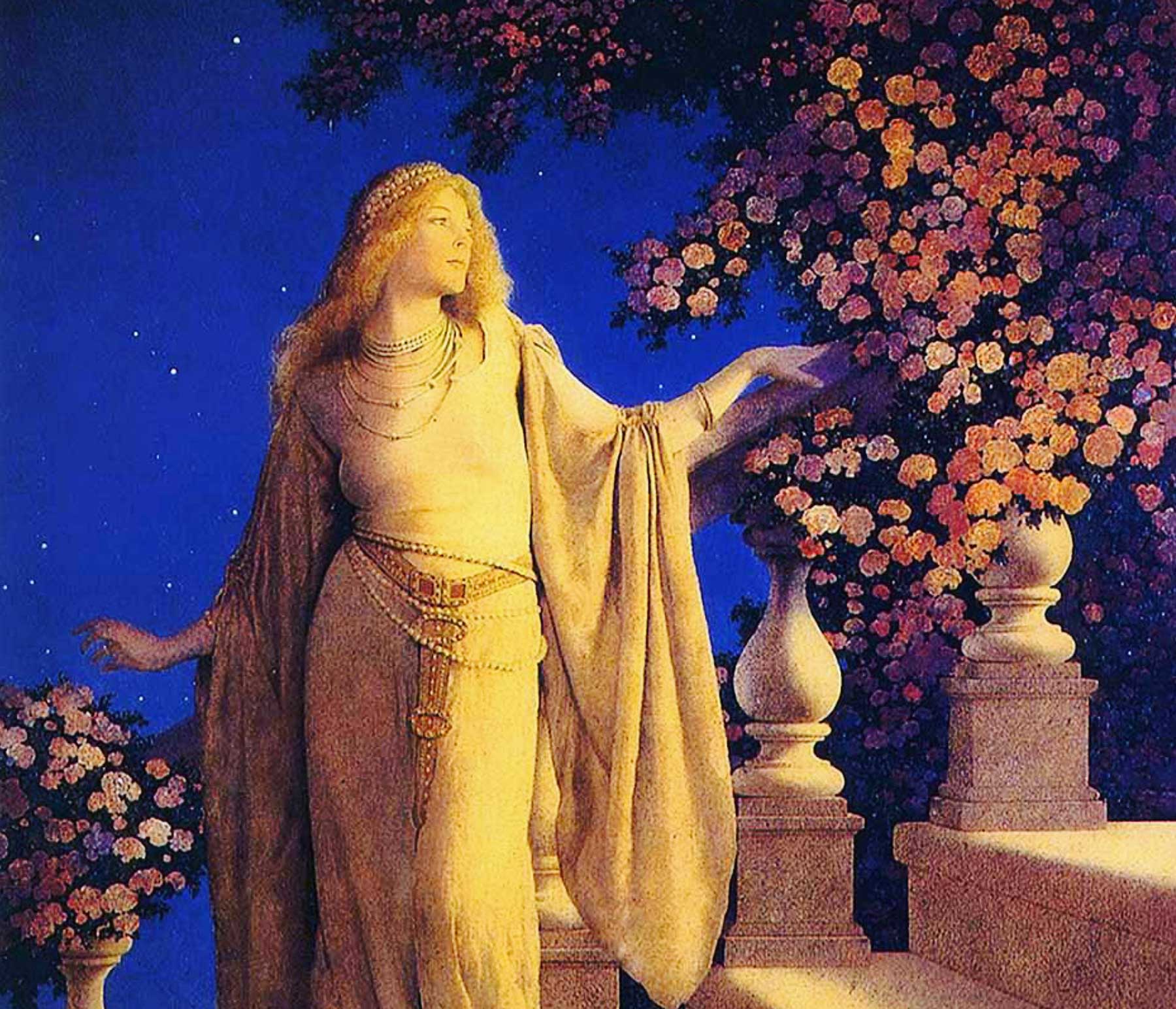
Color Palette of the Month
This month, I couldn’t help but be inspired by our Master Artist – Maxfield Parrish. Parrish used a rainbow of colors in his works and he is absolutely brilliant at balancing warm and cool tones! I have noticed that in many of his paintings he chooses deep blues, golden yellows and oranges. He layers these in varying intensities, sometimes shifting to soft baby blues, and creamy peach tones. Blue and orange, as many of you know, are complimentary colors so they are a powerful pair indeed. Side by side they create intense energy and often a shimmering effect. So for this month we will be playing with these hues. As always, if you are called to explore a different palette, please feel free.

“The hard part is how to plan a picture so as to give to others what has happened to you. To render in paint an experience, to suggest the sense of light and color, of air and space.”
– Maxfield Parrish
Color Palette
Balanced Artist PROMPT:
- Balance in composition is very important to the overall harmony of a piece. Look at a selection of your recent creations…and study them for a minute. Do they feel balanced or imbalanced? Is one side “heavier” than the other. Think about ways you can balance out these pieces. You can lay tracing paper over them and experiment or make photocopies. Try adding shapes, forms, marks or even remove elements to find a pleasing balance to your pieces. Read more on this HERE.
Master Artist Guide
Maxfield Parrish
Studying Illustration in my years at Art School, I was struck with awe when the work of Maxfield Parrish was presented to me. I sat straight up in the auditorium as his vivid works illuminated the large projection screen in front of us. Immediately, I was dazzled by his saturated colors and dream like settings. Beautifully designed and expertly balanced, his compositions drew you in and his graceful figures shared their stories. When I decided we would talk about balance and harmony in this issue, Maxfield Parrish’s work showed up in my mind’s eye right away! I can’t wait to share his work and life with you…
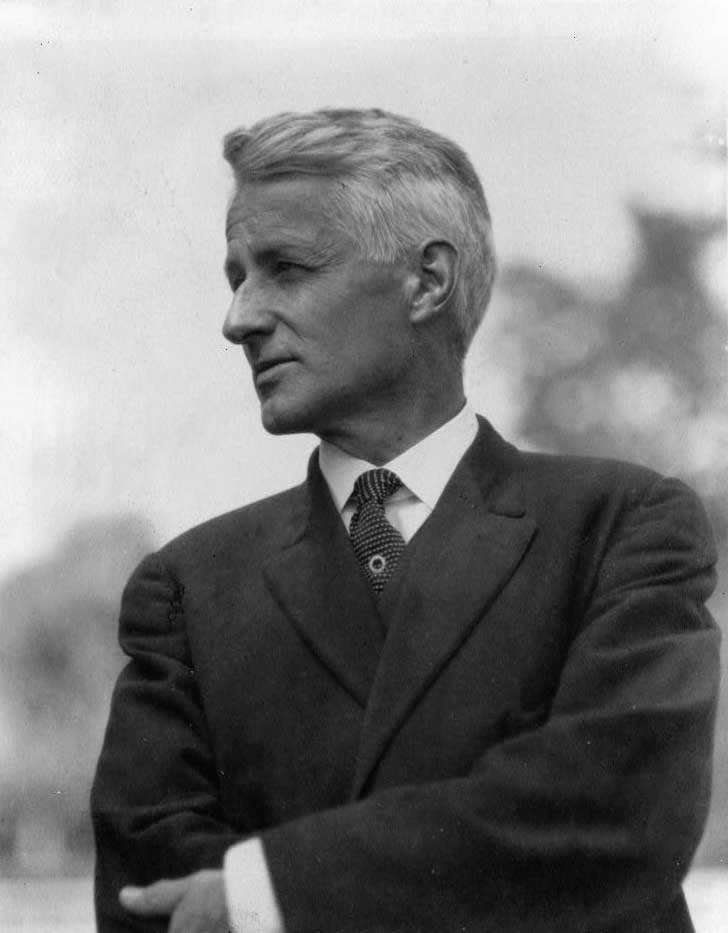
“I don’t know what people find or like in me, I’m hopelessly commonplace! Current appreciation of my work is a bit highbrow, I’ve always considered myself a popular artist.”
– Maxfield Parrish
OVERVIEW – Maxfield Parrish (July 25, 1870 – March 30, 1966) was an American painter and illustrator active in the first half of the 20th century. He is known for his distinctive saturated hues and idealized neo-classical imagery. His career spanned fifty years and was wildly successful: his painting Daybreak (1922) is the most popular art print of the 20th century.
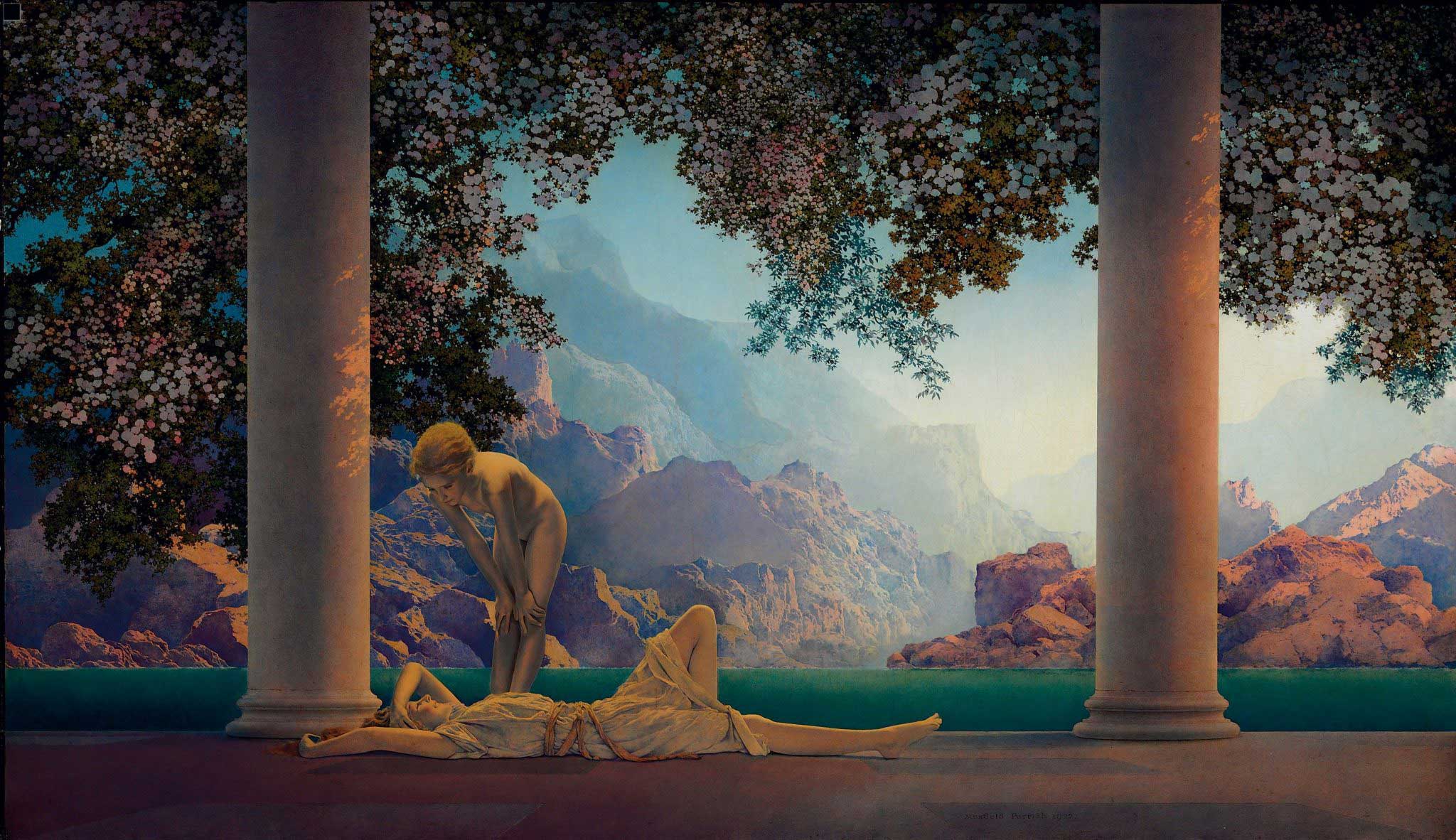
Daybreak, 1922
Early Life
Maxfield Parrish was born in Philadelphia, Pennsylvania, to painter and etcher Stephen Parrish and Elizabeth Bancroft. His given name was Frederick Parrish, but he later adopted Maxfield, his paternal grandmother’s maiden name, as his middle, then finally as his professional name. He was raised in a Quaker society. As a child, he began drawing for his own amusement, showed talent, and his parents encouraged him. Between 1884 and 1886, his parents took Parrish to Europe, where he toured England, Italy, and France, was exposed to architecture and the paintings by the old masters, and studied at the Paris school of a Dr. Kornemann.
He attended the Haverford School and later studied architecture at Haverford College for two years beginning in 1888. To further his education in art, from 1892 to 1895 he studied at the Pennsylvania Academy of the Fine Arts under artists Robert Vonnoh and Thomas Pollock Anshutz. After graduating from the program, Parrish went to Annisquam, Massachusetts where he and his father shared a painting studio. A year later, with his father’s encouragement, he attended the Drexel Institute of Art, Science & Industry
career
Parrish entered into an artistic career that lasted for more than half a century, and which helped shape the Golden Age of illustration and American visual arts. During his career, he produced almost 900 pieces of art including calendars, greeting cards, and magazine covers. Parrish’s early works were mostly in black and white.
In 1885, his work was on the Easter edition of Harper’s Bazaar. He also did work for other magazines like Scribner’s Magazine. He also illustrated a children’s book in 1897, Mother Goose in Prose] written by L. Frank Baum. By 1900, Parrish was already a member of the Society of American Artists. In 1903, he traveled to Europe again to visit Italy.
Parrish took many commissions for commercial art until the 1920s. Parrish’s commercial art included many prestigious projects, among which were Eugene Field’s Poems of Childhood in 1904, and such traditional works as Arabian Nights in 1909.
In 1910, Parrish received a commission to create 18 panels to go into the Girls Dining Room of the Curtis Publishing Company building in Philadelphia. It would take him 6 years to finish the monumental project. In 1914, before the murals were completed, Curtis commissioned Parrish to design a 15-by-49-foot (4.6 m × 14.9 m) mural for the building lobby. The mural design was Parrish’s but Tiffany Studios supplied the tiny glass tiles to create the mosaic.
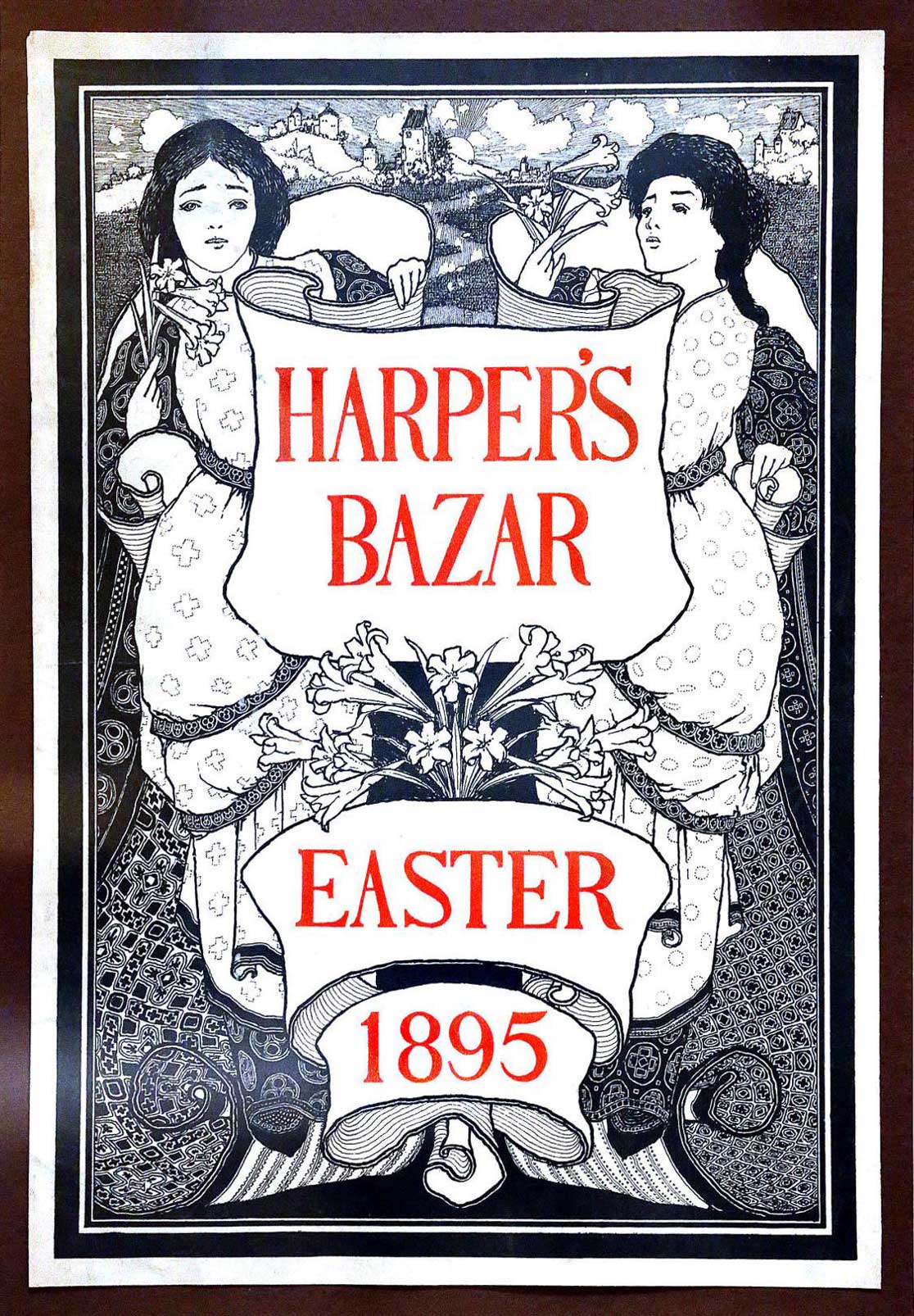
Harper’s Bazaar Easter cover, 1885
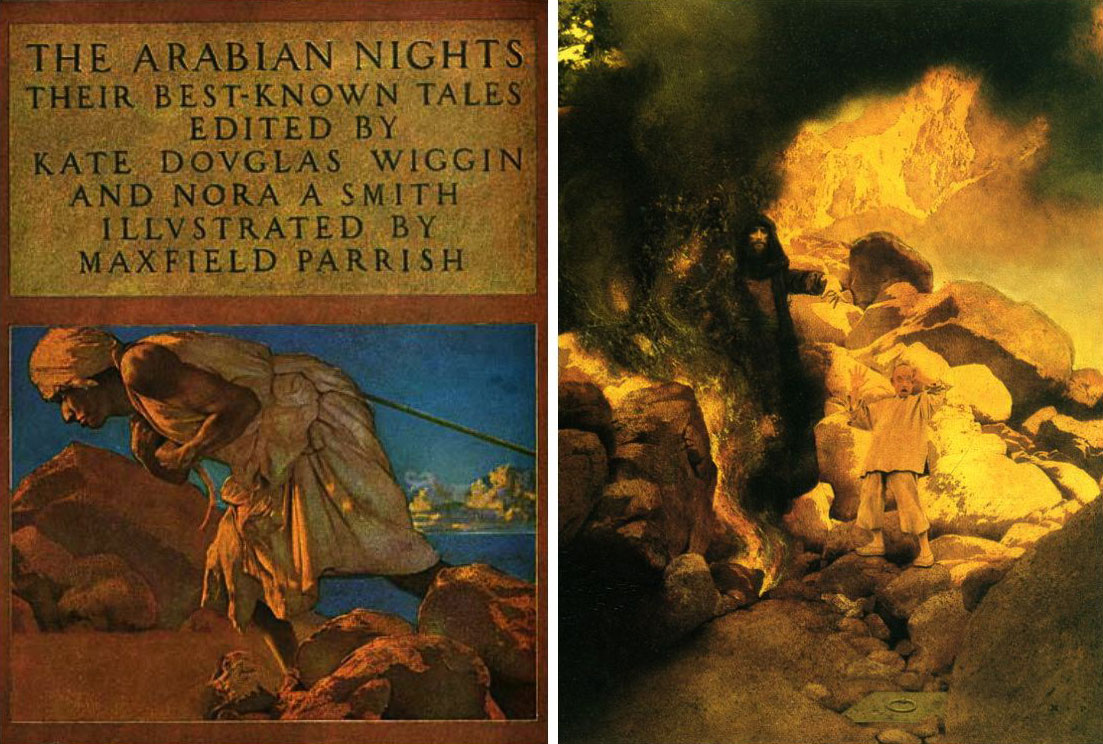
Arabian Nights, 1909
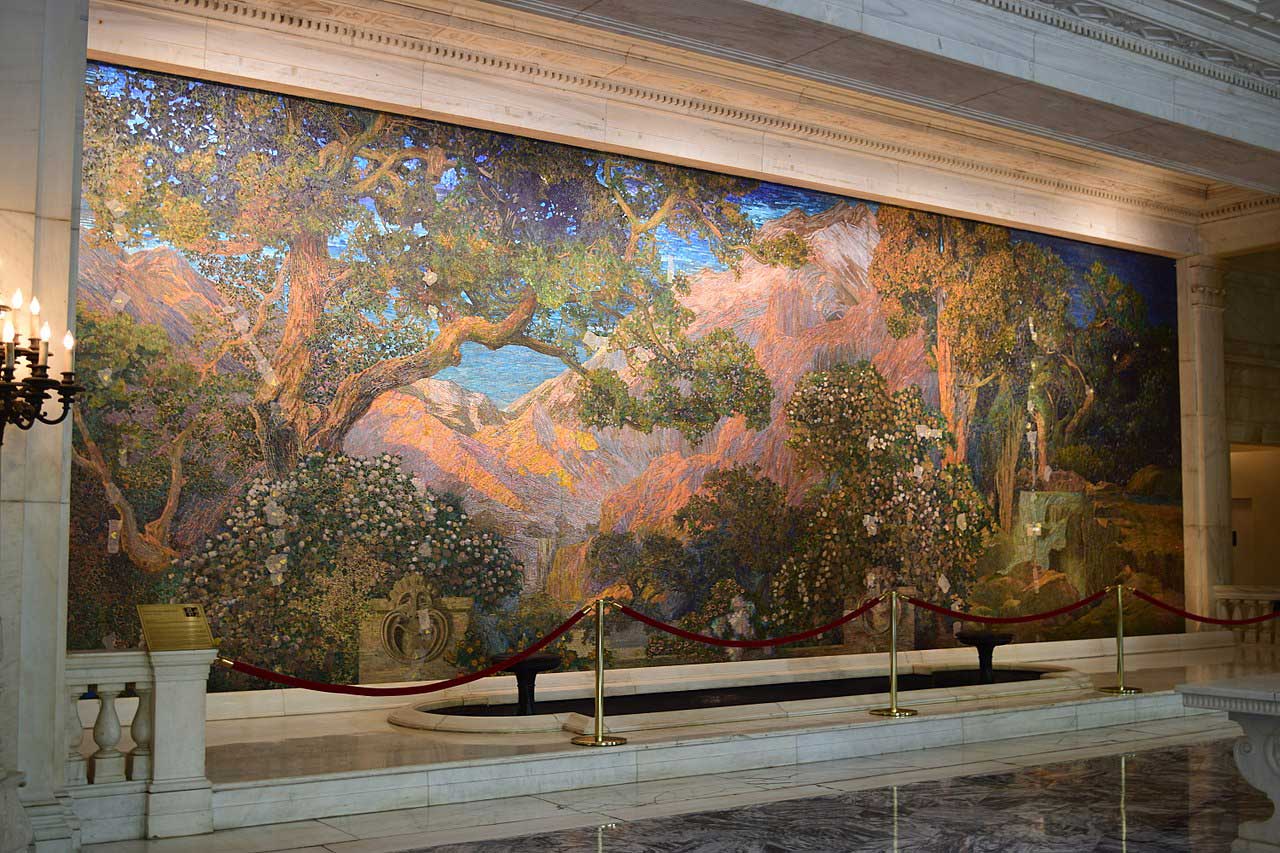
Dream Garden, 1909
Parrish worked with popular magazines throughout the 1910s and 1920s, including Hearst’s and Life. He also created advertising for companies like Wanamaker’s, Edison-Mazda Lamps, Colgate and Oneida Cutlery. He also painted advertisements for D.M. Ferry Seed Company in 1916 and 1923, which helped him gain recognition in the eye of the public. His most well-known art work is Daybreak which was produced in 1923. It features female figures in a landscape scene. The painting also has undertones of Parrish blue (Cobalt blue). In the 1920s, however, Parrish turned away from illustration and concentrated on painting.
In his forties, Parrish began working on large murals instead of just focusing on children’s books. His works of art often featured androgynous nudes in fantastical settings. He made his living from posters and calendars featuring his works.Beginning in 1904, Susan Lewin (1889-1978) posed for many works, and became Parrish’s longtime assistant.From 1918 to 1934, Parrish worked on calendar illustrations for General Electric.
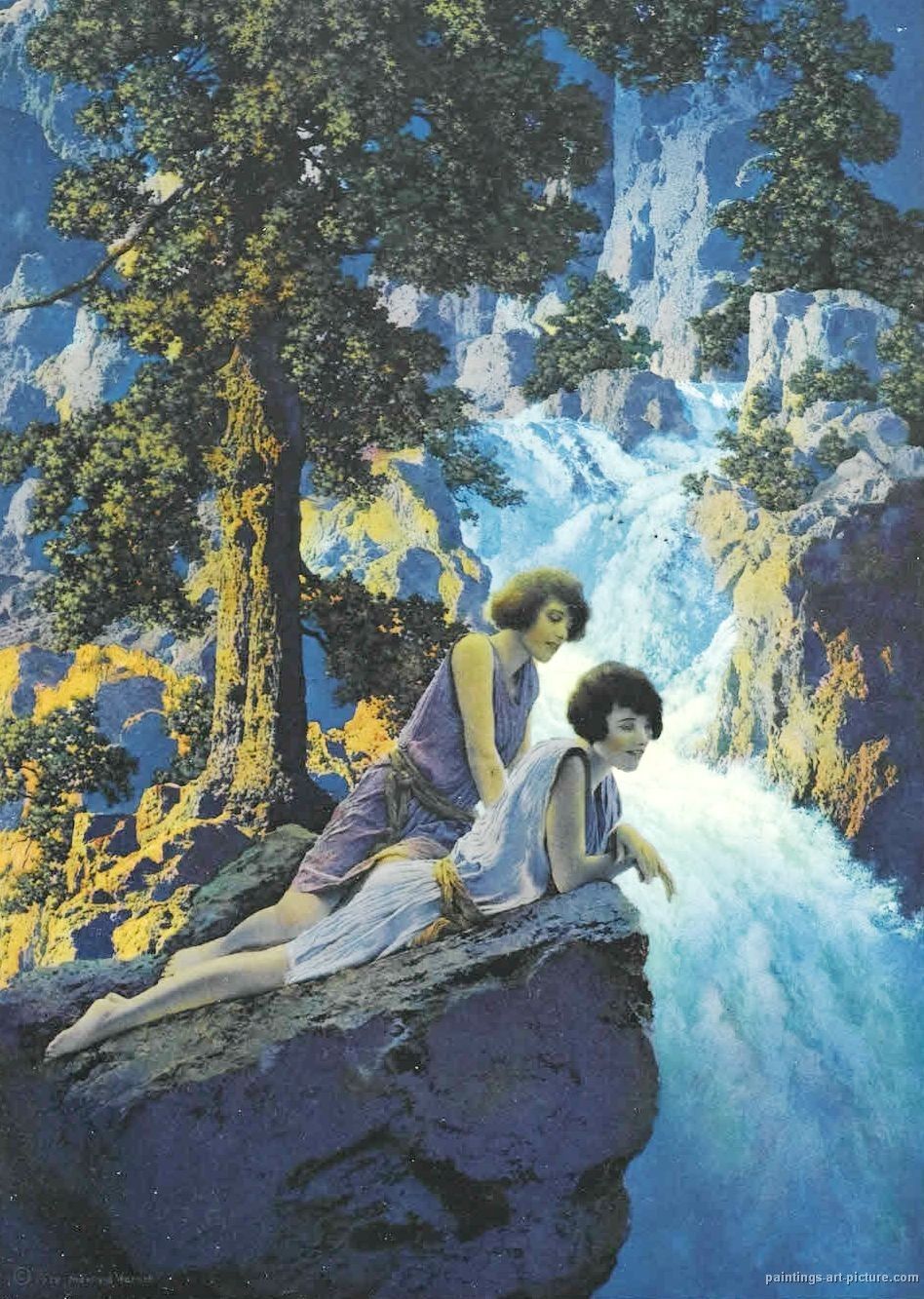
The Waterfall, 1931
In 1931, Parrish declared to the Associated Press, “I’m done with girls on rocks”, and opted instead to focus on landscapes. By 1935, Parrish exclusively painted landscapes. Though never as popular as his earlier works, he profited from them. He would often build scale models of the imaginary landscapes he wished to paint, using various lighting setups before deciding on a preferred view, which he would photograph as a basis for the painting. He lived in Plainfield, New Hampshire, near the Cornish Art Colony, and painted until he was 91 years old. He was also an avid machinist, and often referred to himself as “a mechanic who loved to paint”.

The Mill Pond, 1945
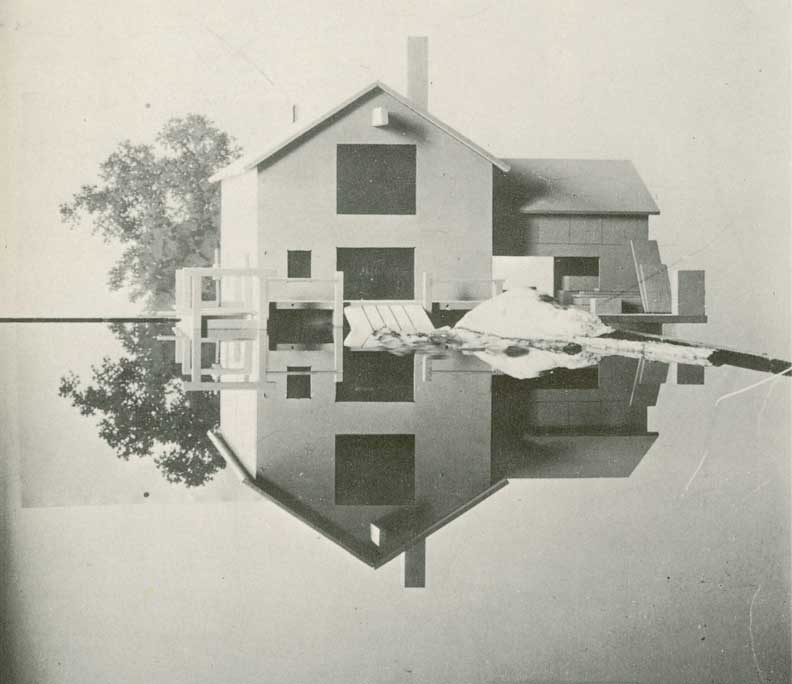
Scale Model of Millpond, 1945
Technique
Parrish’s art is characterized by vibrant colors; the color Parrish blue was named after him. He achieved such luminous color through glazing. This process involves applying alternating bright layers of translucent glaze separated by varnish over a base rendering. Parrish usually used a blue and white monochromatic underpainting.
Parrish used many other innovative techniques in his paintings. He would take pictures of models in black and white geometric prints and project the image onto his works. This technique allowed for his figures to be clothed in geometric patterns, while accurately representing distortion and draping. Parrish would also create his paintings by taking pictures, enlarging, or projecting objects. He would cut these images out and put them onto his canvas. He would later cover them with clear glaze. Parrish’s technique gave his paintings a more three-dimensional feel. The outer proportions and internal divisions of Parrish’s compositions were carefully calculated in accordance with geometric principles such as root rectangles and the golden ratio. In this, Parrish was influenced by Jay Hambidge’s theory of Dynamic Symmetry.
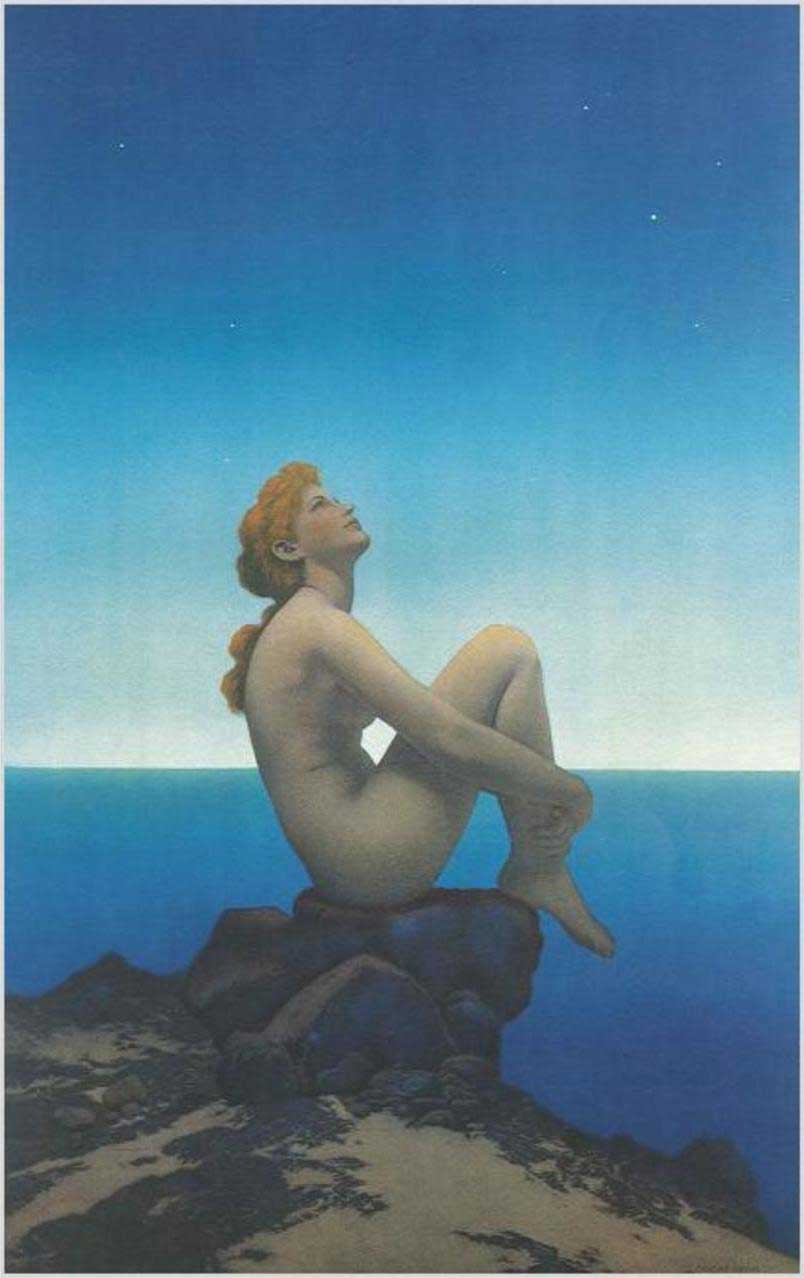
Stars, 1926

North Wall Panel, in the home of Gertrude Vanderbilt Whitney, NY 1918
Personal Life
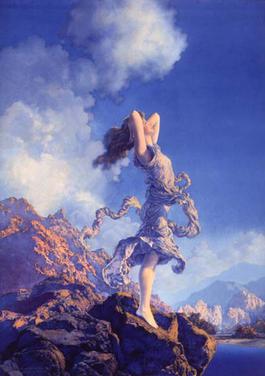
Parrish suffered from tuberculosis for a time in 1900. While sick, he discovered how to mix oils and glazes to create vibrant colors.
While studying at Drexel, Parrish met his future wife, Lydia Ambler Austin. The couple was married on June 1, 1895 and moved to Philadelphia. They would go on to have four children together. In 1898, Parrish moved to Cornish, New Hampshire with his family and built a home that was later nicknamed “The Oaks”. The home and an adjacent studio were surrounded by beautiful landscapes that inspired Parrish’s drawings.
From 1900 to 1902, Parrish painted in Saranac Lake, New York, and Castle Hot Springs, Arizona to further recover his health.
Parrish’s youngest child, Jean, posed for Ecstasy just before leaving for Smith College. Jean was the only child to follow her parents’ profession.
Parrish developed arthritis. He accepted his last commission in the late 1950s. By 1960 his arthritis prevented him from painting. His last years were spent in a wheelchair. He died on March 30, 1966 in Plainfield, New Hampshire, at the age of 95.
“Thank you for allowing me to use colors as rich and deep as you please.”
– Maxfield Parrish
ENJOY THIS SLIDESHOW OF SOME OF HIS WORK…
Here’s a Pinterest board full of his work to inspire you!
Studioworks Homework
I highly recommend you watch this wonderful documentary that discusses Parrish’s most famous piece – “Daybreak”. They touch on his techniques and the piece’s resonance and impact on American Art History.
Master Artist Guide
Sketchbook Explorations
EXPLORATION 1
Parrish Inspired
Create a Parrish master study or a piece inspired by his colors and style. Feel free to transfer, collage or trace your figures/landscape onto your page or substrate of choice. Use whatever medium you like. I chose to work on a small panel with thin layers of acrylics and Satin glazing mediums. I began with a blue monochromatic underpainting, just as Parrish might have. I chose to collage on my figure (just as Parrish did on occasion). Here is the image I used of actress Billie Dove)
I’ve created a Pinterest board with some vintage figures and portraits to inspire you. Many of them remind me of the women Parrish used in his compositions.
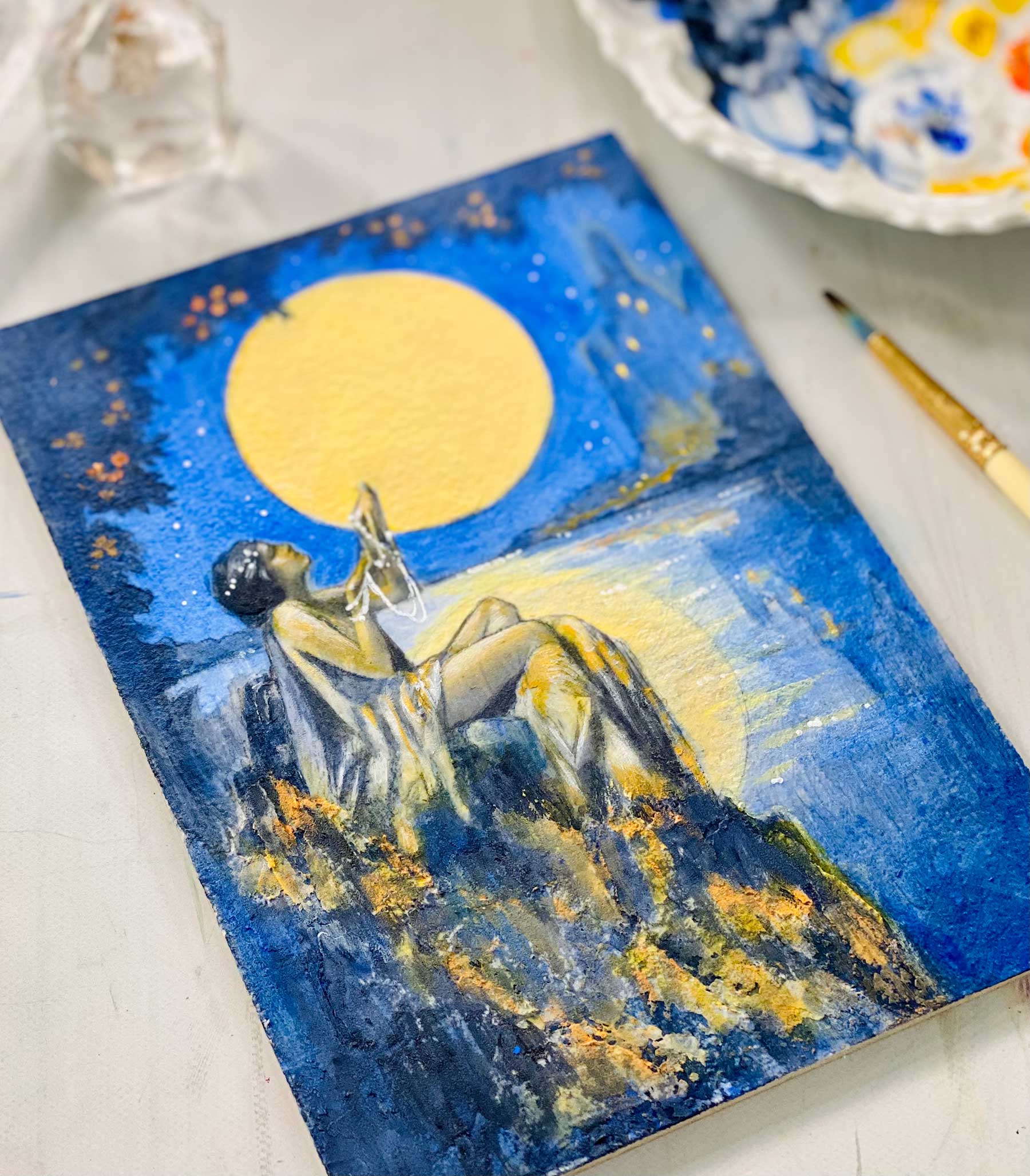
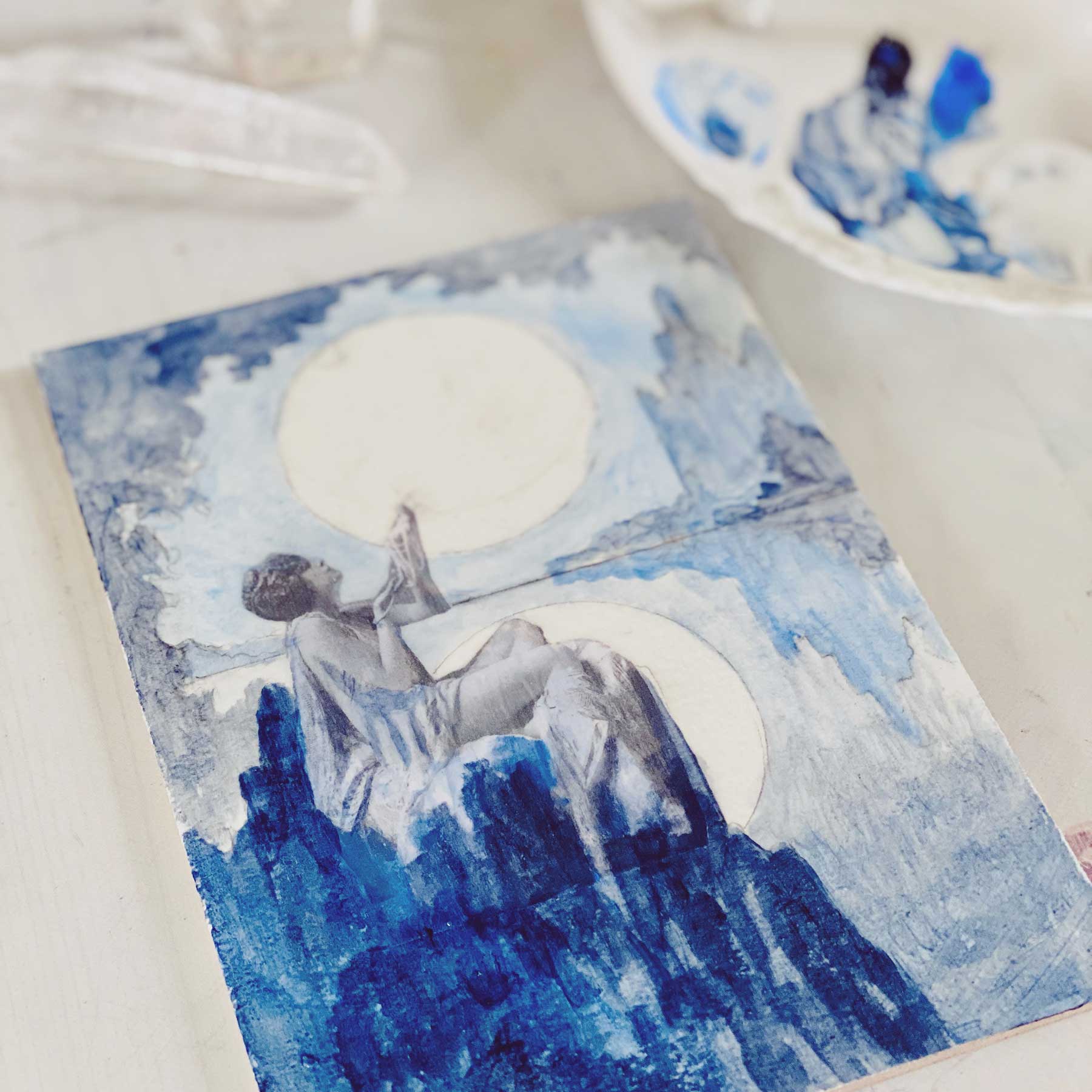
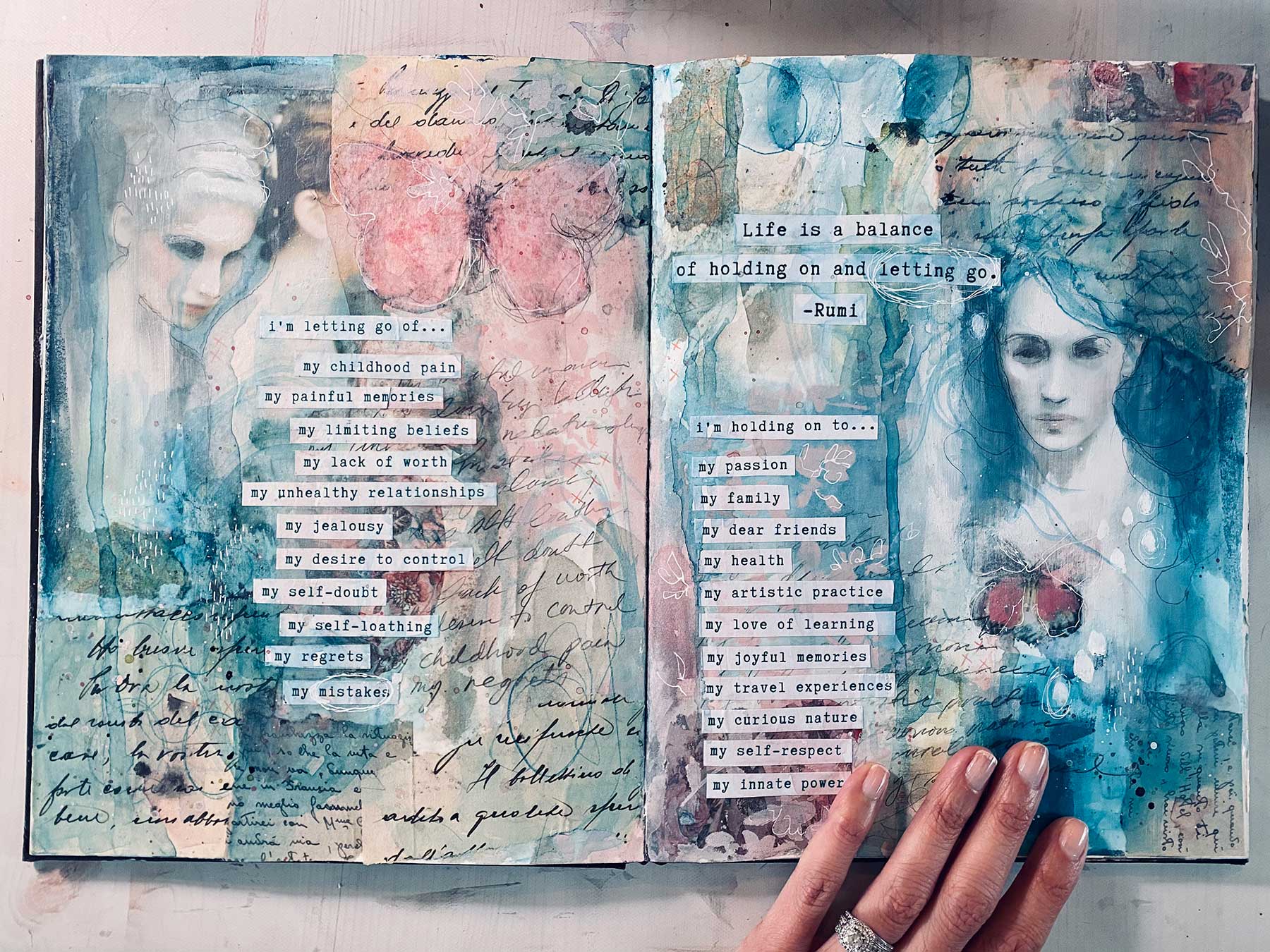
EXPLORATION 2
Finding Balance & Harmony
In your art journal or sketchbook dedicate a page or a spread to the idea of finding balance and harmony in your creative life. You can use collage, drawings, words to express this. I had done a spread about this very topic for another class I taught in, so I will share that lesson with you here. I use the Rumi quote – “Life is a balance of holding on and letting go.” as my inspiration. I hope you enjoy.
EXPLORATION 3
Guest Teacher Lesson
Artist, Ce Duff has a wonderful mixed media lesson inspired by some of Maxfield Parrish’s illustrations! I can’t wait for you to see this one! Hop on into the classroom to begin this lesson with Ce! Thank you again to Ce for collaborating with us and sharing her wonderful gifts with our community! Take a look at some of Ce’s past works! Gorgeous right?
“One who lives in harmony with oneself lives in harmony with the universe.”
– Marcus Aurelius
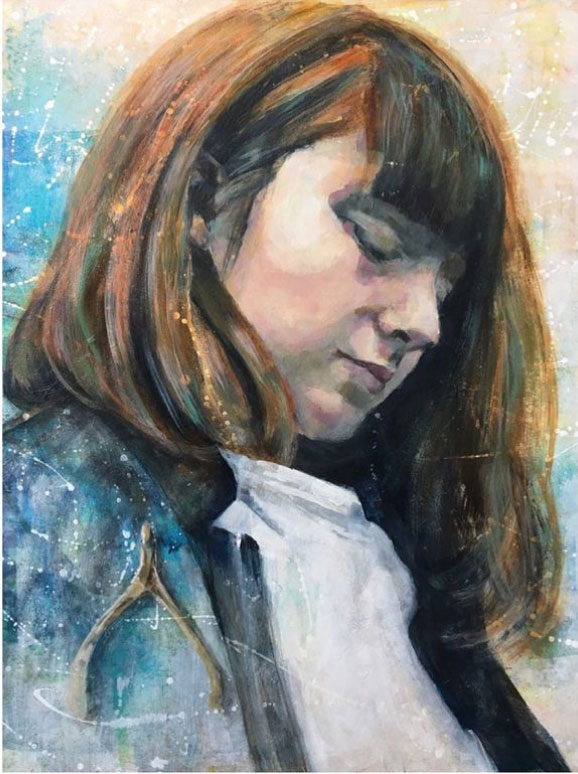
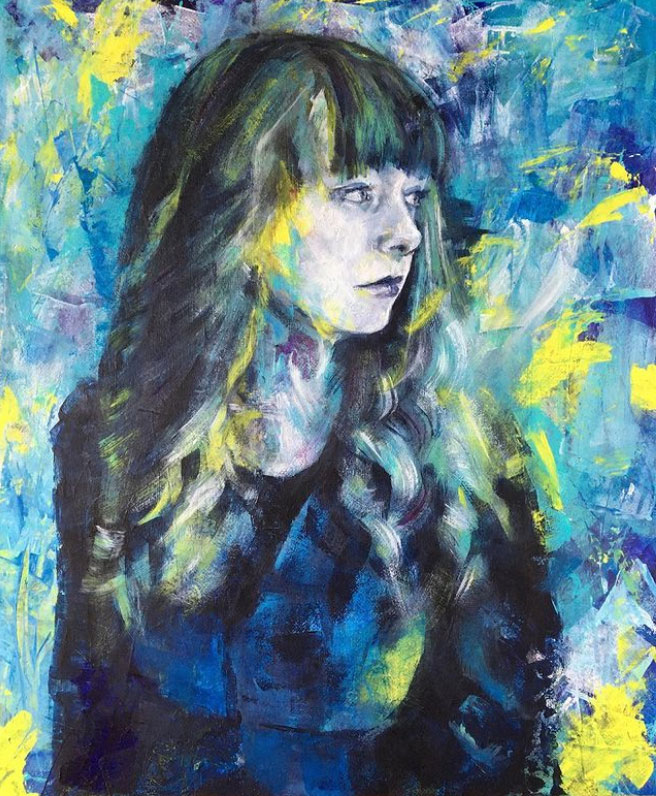
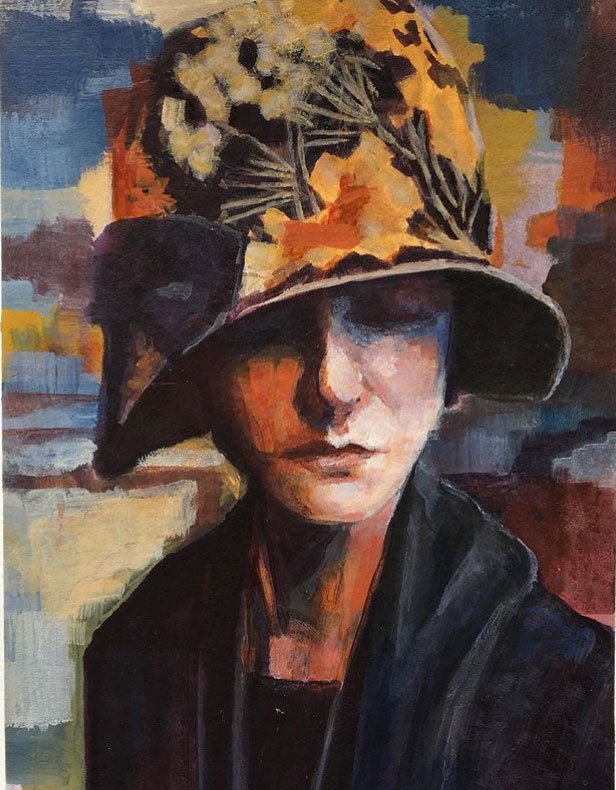
MONTHLY ART PROJECT
Mixed Metaphor – By Ce Duff
So very delighted to share that our guest artist this month is the talented, Ce Duff. She has created a very special lesson just for us! Ce was greatly inspired by some of earlier illustrations done by Maxfield Parrish. This mixed media lesson is a real treat so get ready to dive in and have some fun! Enjoy!
STUDIOWORKS
Submission Calls
STUDIOWORKS PODCAST
issue thirty
You can also listen to this month’s issue of the Studioworks journal. I find I love listening to books, podcasts and music while I draw, paint or go on a long walk. Enjoy.
Studioworks : issue thirty
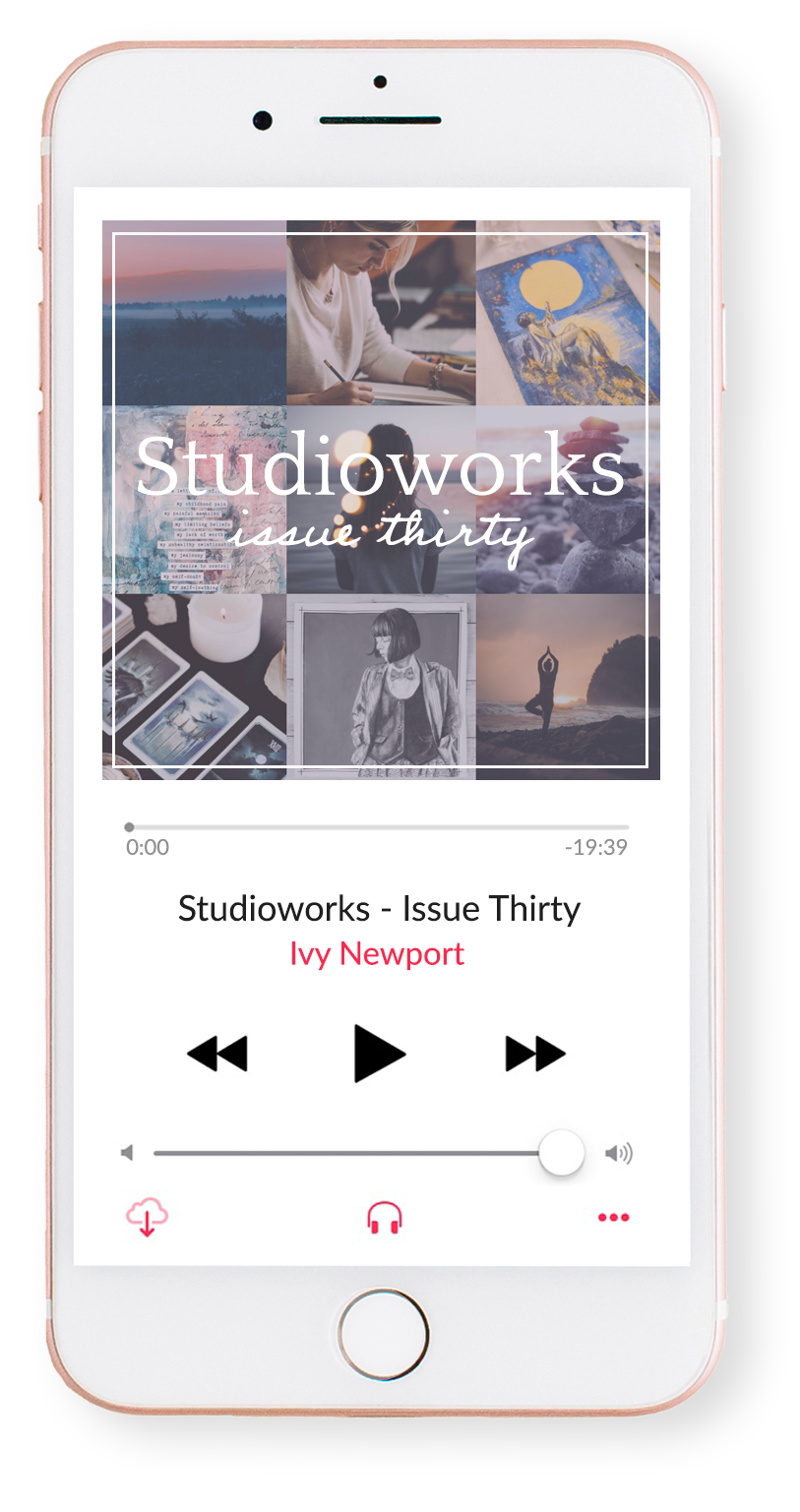
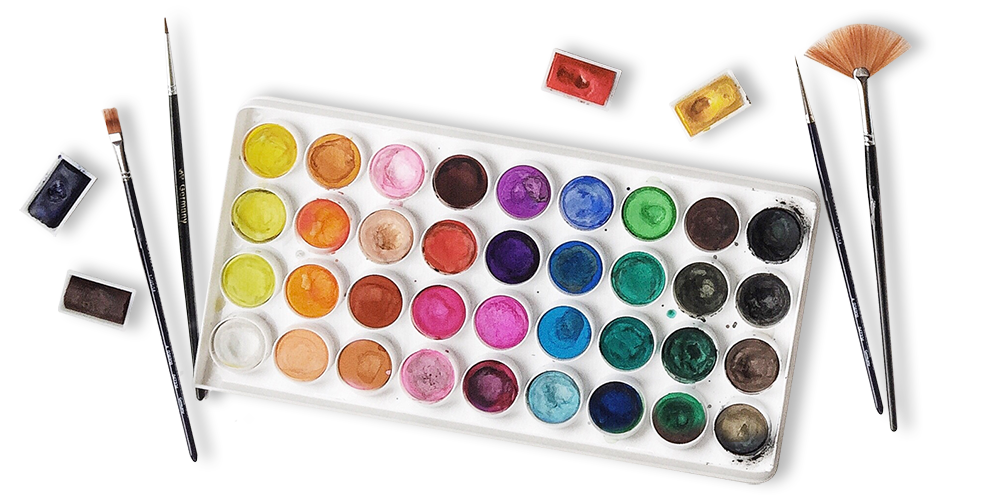
inspiration: curated
Books to Discover & Enjoy
MUSIC PLAYLIST
I had so much fun curating this list. I hope you enjoy!!
THINGS TO WATCH
PINTEREST BOARDS
CLASSES TO TRY
Here are just a few of our fantastic classes! They feel in alignment with this month’s issue! I highly recommend checking them out if you haven’t already. Enjoy!

© 2019 IVYNEWPORT, LLC ALL RIGHTS RESERVED.

